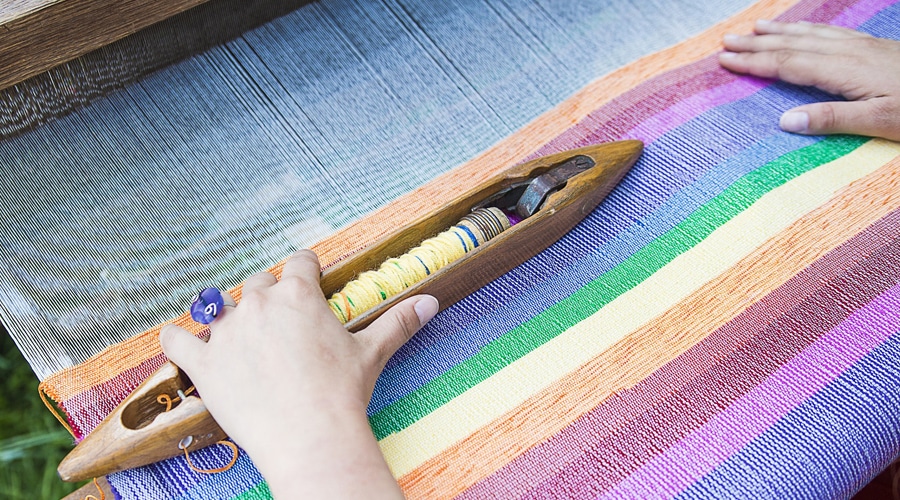Shanghai’s allure isn’t just skyscrapers and neon lights – it’s also the delicate threads of silk that have woven through its history for centuries. In this comprehensive travel guide, we dive into the silk factory Shanghai experience, from hands-on factory tours to insider shopping tips. Whether you’re a culture enthusiast, a shopping lover, or a curious traveler, visiting a silk factory in Shanghai offers a warm and engaging journey into Chinese tradition and craftsmanship.
Introduction to Shanghai’s Silk Heritage
Shanghai sits at the heart of China’s historic silk region, neighboring Suzhou and Hangzhou, cities renowned as the silk capitals of China. For over a thousand years, Chinese silk has been prized worldwide, once shipped along the ancient Silk Road and fueling Shanghai’s rise as a trading port. Local legend even traces silk’s discovery to Leizu (Xi Lingshi), the wife of a Chinese emperor, who uncovered silk when a cocoon dropped into her tea and unraveled into a shimmering thread. From imperial courts to international expos, silk from the Jiangnan region (the “south of the Yangtze” area that includes Shanghai) became synonymous with luxury and cultural exchange.
Today, Shanghai honors this heritage with interactive silk factory tours and museums. These experiences blend history with hands-on discovery – you can watch silkworms munching on mulberry leaves, see cocoons spun into fine thread, and feel the lush finish of high-quality silk fabric. And of course, you’ll find plenty of opportunity to take home a piece of Shanghai’s famed silk. As of 2025, the city’s silk factories and shops are open and thriving, offering visitors an authentic look at the past and present of China’s silk industry. Let’s explore why a Shanghai silk factory tour is worth adding to your itinerary, and exactly how to plan an unforgettable visit.
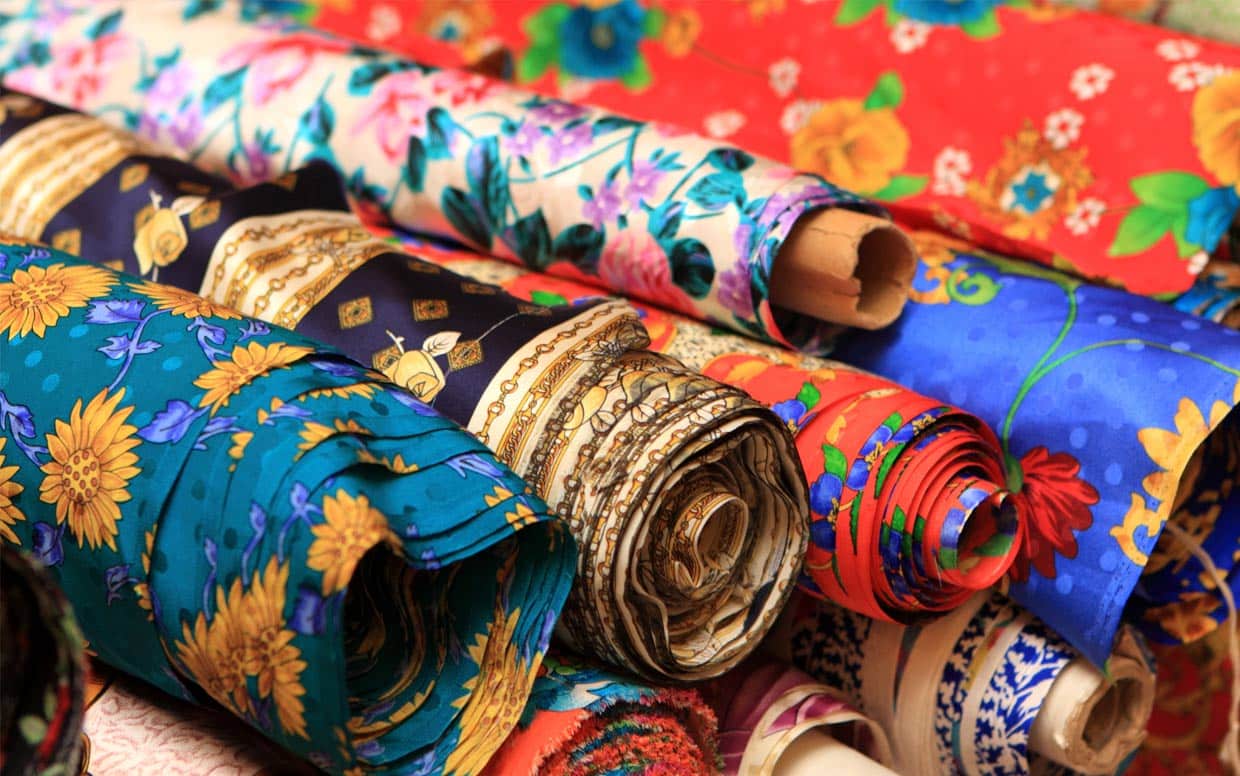
Why Visit a Silk Factory in Shanghai?
Visiting a silk factory in Shanghai is absolutely worth it – it’s both an educational journey and a sensory delight. Here are a few compelling reasons travelers rave about the experience:
- See the Silk-Making Process Up Close: Instead of reading about silk in a textbook or only seeing finished scarves in a shop, a factory tour shows you every stage in person. Watch as workers gently boil and unwind silkworm cocoons to extract delicate filaments. You’ll witness how many tiny threads are spun together to create a single strong strand of silk. Many tours even let you hold silkworms or stretch raw silk fibers yourself, which is fascinating and fun for all ages.
- Learn about History & Culture: The guides (often English-speaking) will share Shanghai’s rich silk history – from the days it was a cornerstone of the Silk Road trade to modern innovations in silk quilting and fashion. These stories add cultural context and depth to what you’re seeing. At the Shanghai Jiangnan Silk Museum, for example, a short presentation covers 5,000 years of silk heritage and the significance of silk in China, making the visit more meaningful.
- Experience Chinese Craftsmanship: Silk production is an art form that has been perfected over centuries. Watching the skilled artisans at work – from feeding silkworms to hand-weaving patterns – gives you an appreciation for Chinese craftsmanship and patience. You’ll see a blend of ancient techniques and modern technology: in some factories, mechanized reeling machines whir alongside traditional handlooms in action.
- Shop for Authentic Silk Goods: Perhaps the highlight for many is the shopping at the end of the tour. Factory showrooms carry everything from small souvenirs to high-end silk products. You can browse pure silk scarves, ties, pajamas, cheongsams (qipaos), and the ever-popular silk duvets and bedding. The selection is vast and the quality is typically top-notch – after all, these are the source factories. For those concerned about luggage space, factories like Tian Hou even offer to vacuum-pack silk duvets and pillows into travel-friendly bundles! Even if you’re not a big shopper, it’s intriguing to see the variety of items that silk can create, from delicate embroidered fan covers to heavy winter silk comforters.
- Family-Friendly and Interactive: A silk factory visit is great for families – kids are often amazed to see live silkworms munching on mulberry leaves and to feel the soft cocoons. Many factories have interactive demos where volunteers (kids or adults) help pull strands of silk or test the strength of the fibers. It’s educational in the best way: through touch and sight. And for anyone not interested in shopping at the end, don’t worry – most places have a seating area or café corner to relax while others browse.
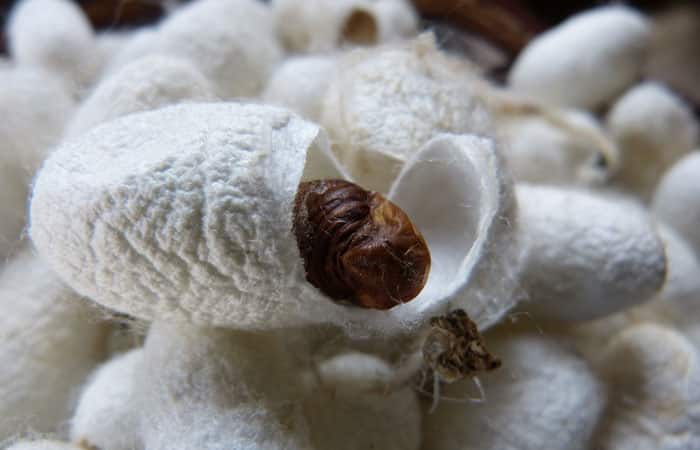
In short, a silk factory tour in Shanghai is worth it because it merges culture, history, hands-on fun, and shopping in one experience. It’s a chance to step behind the scenes of an iconic Chinese product and walk away with both knowledge and maybe a gorgeous silk souvenir. The atmosphere is generally relaxed and engaging – you’re not just being shuffled through a store, but genuinely shown how one of the world’s most luxurious fabrics is made, right here in Shanghai.
Top Silk Factories to Visit in Shanghai (2025)
Shanghai has a few renowned silk factories and museums open to visitors. Each offers a slightly different experience, but all will show you the journey from cocoon to fabric and have on-site shops. Below is a curated list of the top silk factories in Shanghai, including the famous Tian Hou Silk Factory. We’ve included updated 2025 details like addresses, hours, and highlights for each.
To help you compare them at a glance, here’s a quick comparison table:
| Silk Factory | Location | Hours (2025) | Admission | Highlights |
|---|---|---|---|---|
| Tian Hou Silk Factory | Minhang (Hongqiao area) | Daily 9:00–17:00 (approx.) | Free | Modern factory tour, interactive demos, large silk showroom (bedding, apparel) |
| Shanghai Jiangnan Silk Museum | Putuo (near downtown) | Daily 9:00–17:00 (approx.) | Free | Educational exhibits, live silk reeling demo, quality silk product store |
| Qi Cai Silk Factory (七彩丝绸厂) | Xuhui (southwest) | Daily 9:00–18:00 (approx.) | Free | Silk & carpet weaving, hands-on stretching of silk, factory outlet for silk quilts, carpets |
Hours are typically standard working hours; always check ahead or call to confirm if possible, as hours may vary slightly by season or tour bookings.
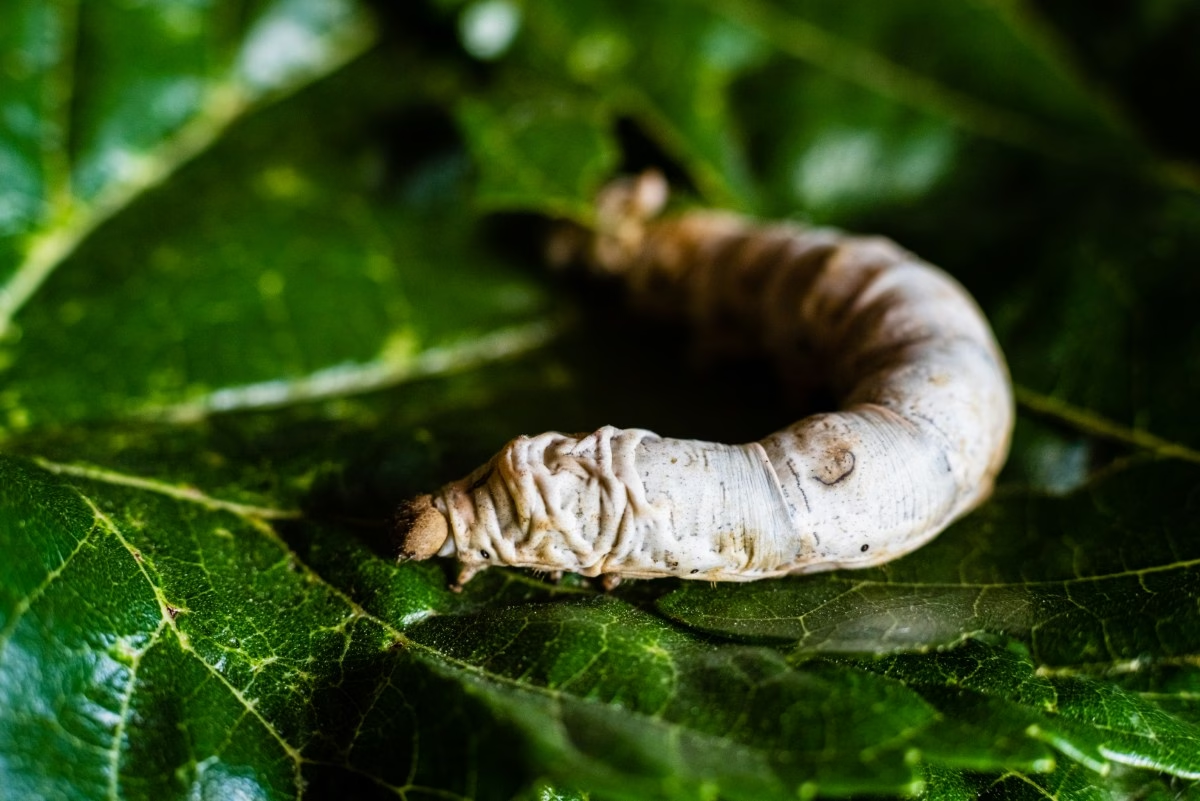
Now, let’s look at each of these silk factory stops in detail:
Tian Hou Silk Factory
Address: No. 308 Hongjing Road, Minhang District, Shanghai (in the Hongqiao area). This location is about 5 km west of Hongqiao International Airport and roughly 50 km from Pudong Airport. It’s on the city’s western side, which makes it a convenient stop if you’re coming/going via Hongqiao or visiting nearby attractions.
Hours & Admission: Open daily, roughly 9:00 AM to 5:00 PM. Admission is free – you typically just walk in or arrive with a tour group. No advance ticket needed. The factory welcomes tourists throughout the day, often coordinating with tour company schedules. It’s a good idea to visit in the morning to avoid afternoon tour bus crowds, but even peak times are manageable with the large facility.
Getting There: If you’re not on a tour bus, you can reach Tian Hou by public transport plus a short walk/taxi. The closest metro stations are Longxi Road (Line 10) or Hechuan Road (Line 9); from either, it’s about a 10-minute taxi ride to the factory. Given its proximity to Hongqiao, taking a taxi or ride-share directly from central Shanghai (or on your way to the airport) is also a convenient option (approximately 30–40 minutes from The Bund area, traffic permitting).
What to Expect: The Tian Hou Silk Factory offers an informative, start-to-finish tour of silk production in a modern setting. When you enter, you’ll be greeted by an English-speaking guide who will take you through a brief presentation on silk history and the life cycle of the silkworm. You’ll likely see displays of silkworm eggs, larvae, and cocoons (some in glass cases, and often live silkworms crawling on trays of mulberry leaves!). This introduction lasts about 10–15 minutes and sets the stage.
Next comes the fascinating part – demonstrations of silk reeling and stretching. Tian Hou has a working demonstration where technicians immerse the silkworm cocoons in warm water and use a reeling machine to unwind the silk filaments. You can watch in amazement as incredibly long threads are pulled from each fluffy white cocoon. The guide will show how multiple filaments are combined to make a single stronger thread, and you’ll feel how fine and almost invisible a raw silk strand is. Visitors are often invited to participate: a highlight at Tian Hou is when a group of guests gets to hold the edges of a delicate silk web and gently stretch it out – this demonstrates how silk batting for comforters is made by layering stretched cocoons. Don’t be shy to join in; it’s a tactile experience you won’t forget!
Throughout the tour, you’ll gain insights such as why silk is so strong for its weight, how natural sericin gum is washed off to make silk lustrous, and the differences between mulberry silk (the finest quality) and other types. The Tian Hou guides are knowledgeable and happy to answer questions – for example, they may explain that one cocoon contains about a mile of silk filament!
After the demo, you’ll be led into Tian Hou’s extensive showroom. This is essentially a large retail store attached to the factory, with sections for various silk products. You’ll find:
- Bedding: The star products here are silk-filled duvets (comforters) and silk pillows. They often demonstrate how a duvet is made by layering many silk webs. Prices can vary by size and silk grade, but expect to invest in the hundreds of USD for a king-size silk comforter. (They will package it for you – vacuum sealed for easy transport, as noted earlier.)
- Clothing: Racks of men’s and women’s apparel, from elegant cheongsams (qipao dresses) to casual blouses, shirts, and ties. You can even get tailor-made qipaos here, though the prices are higher than at a fabric market.
- Accessories: Beautiful silk scarves, shawls, neckties, pocket squares, sleep masks, and more small gifts. These are popular souvenirs since they’re relatively affordable and easy to pack.
- Silk Art and Miscellany: Some factories also sell silk embroidery art, silk rugs, and smaller items like silk-filled plush toys or cocoons as curios.
Take your time to browse. One appreciated aspect of Tian Hou is that if you’re not interested in shopping, there’s a seating area/cafe near the exit where you can relax. The atmosphere in the showroom is generally friendly. Yes, the staff will showcase products and there is a bit of a sales pitch (this is how they sustain the free tours), but most visitors do not feel overly pressured. Feel free to ask questions or for demonstrations – e.g., they might set a silk comforter on fire with a lighter briefly to show it doesn’t burn easily (a classic silk authenticity test!).
Insider Tips:
- Bargaining: While prices have tags, there is sometimes room for polite bargaining, especially on big-ticket items like bedding or if you buy multiple pieces. It’s not a night market, but asking “Is there any discount?” might yield a better price or freebies.
- Quality assurance: Tian Hou is often described as a government-associated store, meaning the silk is genuine. One TripAdvisor user asked if it’s government-owned and whether bargaining is allowed; the consensus is that it’s a reputable place for real silk, and moderate haggling is acceptable in the showroom.
- Combine with nearby sites: Since it’s in Hongqiao, you could visit Tian Hou on your way to the airport, or pair it with a trip to Qibao Ancient Town (a charming old water town in Minhang) to make a day of it.
Overall, Tian Hou Silk Factory is often reviewed as “an interesting insight into silk from worm to product – well worth a visit”. It provides a great balance of education and shopping, and many in tour groups end up happily purchasing duvets or silk clothing here. Expect to spend about 1 to 1.5 hours at Tian Hou if you do some shopping – the guided portion might be ~30 minutes and the rest is up to you.
Shanghai Jiangnan Silk Museum
Address: 289 Aomen Road, Putuo District, Shanghai (普陀区澳门路289号). This is in the northwest part of downtown Shanghai. Despite “Museum” in the name, note that this site is also a functioning silk factory showroom and is often a stop on city tours. (It’s sometimes referred to as the “Jiangnan Silk Factory” or “Jiangnan Silk Warehouse” by tour guides.) The location is fairly central – about 4 km from People’s Square.
Hours & Admission: Open daily, roughly 9:00 AM to 5:00 PM, with free entry and guided tour. Because it’s essentially a commercial attraction, you don’t pay for a ticket. You can walk in during open hours, though most visitors arrive with tour groups or private guides. If you go independently and a tour is in progress, you might be able to tag along to one of the presentations – staff are usually accommodating.
Getting There: The Jiangnan Silk Museum is easier to reach from central Shanghai. By metro, you could take Line 7 or 13 to Changshou Road Station, then it’s about a 10-minute walk (or short taxi ride) to Aomen Road. Several bus lines also run along nearby Wuning Road and Changshou Road. A taxi from The Bund or Jing’an Temple area would take 15–20 minutes. It’s in a busy city area, so combining it with other downtown sightseeing is simple.
What to Expect: This facility offers a very similar experience to Tian Hou, with a few differences in atmosphere and focus. Upon entering the Shanghai Jiangnan Silk Museum, you’ll see a sign and perhaps some silk art displays. A guide (often a multilingual guide who can handle English and Chinese groups) will gather visitors for a short tour through the “museum” exhibits and workshop.
The exhibit area includes educational panels and sometimes glass displays showing the life cycle of silkworms and historical silk garments. It’s an “educational tour of the entire process from growing and feeding the silkworms to collecting the silk threads,” as one description notes. You’ll likely see live silkworms here too, and trays of cocoons. The guide will explain how cocoons are sorted by quality, how silk thread is ranked, and other trivia (for example, did you know it takes about 2,500 cocoons to make one pound of silk?).
Next, you’ll move to a demonstration area where staff show how cocoons are boiled and unwound. Expect a similar demonstration of reeling machines and the chance to stretch silk wadding. The Jiangnan Silk Museum prides itself on preserving silk culture – it was established in 2002 and covers 3,000 square meters, providing a great opportunity to see traditional techniques in action. They sometimes highlight the difference between single thread reeling for fine silk vs. using multiple cocoons together to make thicker filling (used for quilts). This part of the tour is usually engaging, though some travelers note it can feel a bit “fast-tracked” if the place is busy – one tour group reported only a 15-minute talk before heading to the shop. If you’re keen to learn, don’t hesitate to ask questions or linger where you’re allowed.
After the demo, you’re guided into the large showroom/store area, which is the main hall of the building. Here you’ll find a layout similar to other silk factories: there will be bedding products in one section, clothing and fabric bolts in another, and souvenirs/accessories in another. The silk duvets at Jiangnan Silk Museum are touted as excellent value and a signature product. Many visitors do end up buying silk-filled quilts here – they’re light, warm, and considered a lifelong investment for better sleep (the guides will passionately explain how silk breathes and is good for people with allergies, etc.).
Shoppers can also purchase silk fabric by the meter at this location, which is great if you plan to have something tailor-made elsewhere or do sewing yourself. The variety of patterns and colors is impressive. Ready-made garments like suits, ties, dresses, and blouses are of high quality, often with the “Jiangnan Silk” brand. Prices are generally fixed, but you might find occasional discount racks for discontinued items (as one reviewer noted). The staff here are quite experienced with foreign customers – expect them to speak English and even some other languages (catering to European tour groups too).
Pros: The Jiangnan Silk Museum gives a bit more of a “museum vibe” at the start, which is nice for context. It’s very informative, and seeing the full range from silkworm to finished fabric in one place is eye-opening. The on-site store is known for high quality silk – you can trust that what you buy here is genuine (the site is popular with official foreign delegations as well). As an example of its reputation, the Shanghai Silk Mansion Company (which operates such outlets) has even welcomed VIPs like former US President Bill Clinton and family to shop here, underscoring the trustworthiness of their silk.
Cons: Some travelers feel this stop is a bit commercial. Common reviews mention that the tour can be short and quickly transitions into shopping time. There might be sales pressure depending on your guide – e.g., a guide might extol the health virtues of silk bedding for 10 minutes straight. Also, prices, while fair for the quality, are not cheap. One TripAdvisor reviewer cautioned against buying a silk duvet cover here because it was “very expensive” (costing them about AUD \$850 for a quilt + cover). That said, many still felt their purchases were worth the quality, but it’s good to comparison-shop if you have time.
Tips:
- If you’re interested in silk but not in a buying mood, you can still enjoy the demonstration and politely exit afterward. Don’t feel obligated to purchase. A number of reviewers have simply observed and left without issue – a smile and a “no, thank you” works.
- If you do want to buy, ask for certificates of authenticity or material composition, especially for big items. Reputable places like this will provide them.
- Transportation: Because it’s central, you could combine a visit here with nearby attractions. For instance, after your silk factory tour, you could taxi to the Jade Buddha Temple or Changshou Road eateries for lunch.
In summary, the Shanghai Jiangnan Silk Museum is a must-visit for those who want a convenient, educational silk experience within the city center. You’ll come away with a deeper understanding of silk production and possibly a bag full of beautiful silk items. Just budget your time and money accordingly, as the silk allure is strong!
Qi Cai Silk Factory
Also known as the “Seven Colors Silk Factory” (七彩丝绸厂)
Address: Located in the Xuhui District of Shanghai, in the residential area of Kangjian Xincun (near Caohejing). The exact street address isn’t well-publicized online, but it’s known to be in the vicinity of Caobao Road and Guilin Road. This is a bit off the typical tourist path, and Qi Cai Silk Factory is usually visited via private tour or driver rather than by casual drop-in.
Hours & Admission: Typically open daily, roughly 9:00 AM – 6:00 PM. There’s no entrance fee. Because Qi Cai is a slightly smaller outfit, it’s wise to call ahead or have a guide arrange your visit, especially if you’re going independently, to ensure an English guide is on hand.
Getting There: The nearest metro stations are Caohejing Hi-Tech Park (Line 9) or Longcao Road (Line 12), each a few bus stops or a short taxi ride from the factory. Public buses like line 43, 120, or 166 also service the Kangjian area. However, the easiest way is by car – about 20–30 minutes from downtown. Many visitors come here as part of a private city tour that includes multiple artisan factories.
What to Expect: Qi Cai Silk Factory offers an intimate look at silk production and is notable for also featuring silk carpet weaving in addition to the usual silk textiles. On arrival, you might notice it looks less like a museum and more like an actual small factory or showroom. Don’t be surprised if it’s on a quieter street and not as large as Tian Hou or Jiangnan Silk Museum – the experience is more personal here.
A visit usually begins with a staff member explaining (or showing a video about) how silk is made, followed by a walk through a working area. You’ll see staff handling cocoons and spinning silk threads, much like other factories. Qi Cai places emphasis on their silk quilts and bedding – you’ll likely see the process of layering dozens of silk cocoon webs to form a quilt filling. They often invite visitors to help pull apart and stretch a layer of silk fluff (it’s surprisingly strong and elastic!), which is memorable.
One unique aspect is the silk carpet weaving demonstration. Silk rugs and carpets are a luxury item, and at Qi Cai you might see artisans painstakingly knotting fine silk threads to create intricate carpets or tapestries. This craft is related and they sometimes combine the tour – it’s like getting two tours (silk fabric + silk carpet) in one. If you have an interest in textiles, this is a real treat to witness because silk carpets require incredible skill and months of work for a single piece.
After seeing the production, you’ll be guided into Qi Cai’s shop area. Here you’ll find:
- Silk Comforters and Bedding: This factory is quite known for its silk-filled quilts, pillows, and bedding sets. They may have some ready-packed for purchase. Quality is high and prices can be a bit lower than the more touristy spots, but still expect a few hundred USD for a full silk quilt set.
- Silk Fashion and Accessories: A selection of scarves, ties, blouses, and fabric. Possibly smaller than at the bigger museums, but still plenty of variety.
- Silk Carpets/Rugs: If you’re interested (and have the budget), they might show you some of the finished silk rugs, which are truly artwork for your floor or wall. These can be quite expensive (thousands of dollars for a large rug), but the detail and craftsmanship justify it for collectors. Even if you’re not buying, it’s interesting to see them.
Pros: Qi Cai Silk Factory tends to receive positive feedback for its personalized tour. With fewer crowds, you can spend more time asking questions and observing. Some travelers mention they got a private tour with detailed explanations since they were the only visitors at that time. The dual focus on silk textiles and carpet weaving gives this place an edge if you want a broader fiber arts perspective. Also, being slightly off the beaten track means prices can be a tad more reasonable or negotiable, and the sales approach might be more laid-back.
Cons: Because it’s smaller, the facility might not have the polished “museum” exhibits – it’s a bit more functional. If you go without a guide, you might need some patience finding someone who speaks fluent English (though they usually do have English-speaking staff given the tour groups that come). The location is out of central Shanghai, so travel time should be considered. Also, note that Qi Cai Silk Factory is less reviewed online – it doesn’t have the same name recognition as Tian Hou or Jiangnan Silk Museum, so ensure you’re going to the right place (having the name in Chinese – “七彩丝绸厂” – can help if asking locals or taxi drivers).
Tips:
- If you’re particularly interested in buying silk bedding, compare prices here versus the bigger factories. Some have found good deals at Qi Cai. Don’t be afraid to politely bargain.
- Enjoy the quieter setting – without large tour groups crowding around, you can really see the details of the silk threads and even hear the slight whir of the spinning wheels. It feels more like a behind-the-scenes tour.
- This could be a great stop for textile enthusiasts or photographers who want to capture artisans at work, as there’s often more space and time to take photos (just ask permission before photographing workers or specific pieces).
Visiting Qi Cai Silk Factory is like discovering a hidden gem for silk in Shanghai. It complements the bigger silk museums and provides a more hands-on, artisanal vibe. If your schedule allows, including this stop will round out your understanding of silk production – and perhaps yield some unique silk purchases.
(If you don’t have time to venture to Qi Cai, don’t worry – sticking to one of the main two factories above will still give you a comprehensive silk experience. Many travelers only visit one Shanghai silk factory and come away satisfied. But now you know the options!)
Planning Your Silk Factory Tour in Shanghai
Once you’ve decided to explore Shanghai’s silk factories, a bit of planning will help you make the most of the experience. Here’s your practical guide:
When to Visit: You can visit Shanghai’s silk factories year-round, as the tours and demonstrations are all indoors. However, consider the overall trip timing – spring (March–May) and autumn (Sept–Nov) in Shanghai have comfortable weather, which makes traveling around the city pleasant (and silk is a breathable fabric, so even if you buy a scarf in May, you’ll find it useful on cool evenings!). If you’re visiting in the peak of summer or during Chinese New Year, the factories will still be open, but note that:
- In summer (June–Aug), tourist crowds in Shanghai swell. Factories might have more tour buses coming through, which could make the experience a bit more hurried or crowded. Try to go early in the day to avoid the big group tours that often arrive late morning.
- During major Chinese holidays (Golden Week in early October, Lunar New Year in Jan/Feb), some factories might operate on limited hours or close for a day or two for staff breaks. It’s wise to check ahead if your visit falls on a national holiday. Otherwise, normal weekdays and weekends are fine.
How Long to Plan For: A typical silk factory tour (demonstration + browsing/shopping) takes about 1 to 2 hours at a relaxed pace. If you’re a silk enthusiast or intend to do serious shopping (like getting custom tailoring or choosing multiple items), allocate a bit more time – maybe 2 hours or slightly more. It’s easy to lose track of time when you’re touching fabrics and comparing colors! If you plan to visit multiple silk factories in one day, you could do two in a half-day if they are in different areas (for example, Jiangnan Silk Museum in the morning and Tian Hou Silk Factory in the afternoon, with lunch in between). But many travelers find one factory visit per day is enough, to avoid repetition. Remember, you’ll likely be on your feet during the tour, so wear comfortable shoes.
Guided Group Tour vs. Independent Visit: This is a common question – should you join a tour or go on your own? Both approaches have pros and cons:
- Joining a Tour Group: Many Shanghai city tours (both full-day and half-day itineraries) include a stop at a silk factory by default. If you’re already booking a guided tour to see attractions, it’s convenient – you’ll be brought to the factory in a bus, and the guide might even give additional commentary. Group tours are efficient but be aware that they often allocate a set time for the silk stop, which might feel rushed if you want to explore more. Also, tour itineraries sometimes have arrangements with specific factories (often Jiangnan Silk Museum or similar “official” places). The upside is you don’t have to worry about transportation or language barriers, and you’ll be with others who are experiencing it for the first time too.
- Private Tour or Driver: Hiring a private guide or driver for the day gives you more flexibility. You could, for example, tell your guide that you want to spend an extra 30 minutes at the silk factory to shop, or choose which factory to visit. Some private tour companies even offer custom silk-focused tours that include multiple textile spots. This is a great option if you have specific interests (like also wanting to visit the Shanghai Museum of Textiles or a fabric market in the same day).
- Independent Visit: All silk factory showrooms in Shanghai welcome walk-in visitors – you do not need to be on a tour. If you go on your own, you can control how long you stay. The staff on site will still give you a tour/demonstration (that’s their job), even if it’s just you or your small travel party. One advantage is you might get a more personal explanation if it’s not busy. Going independently also means you can pick the time of day (e.g., maybe right when they open to have the place to yourself). Just be prepared to arrange your own transport – but taxis and DiDi (China’s Uber) are easy to use in Shanghai. Also, be confident to say if you’re just looking, since without a tour guide chaperoning, you’ll handle any sales interactions on your own (which is perfectly fine).
Tips for Families: Bringing kids or teens? A silk factory visit can be surprisingly engaging for them. Here are a few pointers:
- Young Children: Little ones will be curious about the silkworms – it’s like a mini-zoo encounter. Just make sure they are gentle if touching cocoons or worms (and wash hands after, since silkworms are kept clean). The demo with stretching silk is usually a hit – children are often invited to help tug the silk layers, which makes them feel included. Do keep an eye on kids in the showroom, though; silky smooth floors and lots of delicate items mean you don’t want them running around. Strollers are generally okay to bring through, as the facilities are spacious.
- Teens: If you have a teenager interested in fashion or science, a silk factory covers both bases – the biology of silkworms and the fashion of silk clothes. Engage them by asking the guide questions (maybe have your teen ask about how a silk tie is made or what makes silk valuable). Some teens might roll their eyes at “another factory tour”, but many come away saying it was more interesting than expected (“cooler than the jade factory or tea ceremony” as some compare).
- Attention Span: The key with families is to keep it interactive. Luckily, these tours are inherently interactive. Still, if you sense the kids are getting restless during the shopping part, take advantage of the sitting area if available, or step outside for a breather after the demo.
Tips for Solo Travelers: Solo travelers often enjoy silk factory visits because it’s a chance to join a small group and chat with fellow travelers. If you go alone, you might be combined with another group for the demo, which can be nice socially. Don’t hesitate to go alone; the staff will treat you just as hospitably (and you have full freedom to browse as long as you want). One tip: sometimes being solo, you can negotiate a little for a better price, especially if you show interest but hesitation in buying (“Hmm, it’s a bit out of my budget…” might get you a small discount or a free silk scarf thrown in). Also, without a companion, you can take plenty of photos – staff can even snap a picture of you pulling silk or holding a bundle of cocoons.
Book in Advance or Walk-In: Generally, no formal booking is required for these silk factories. However, if you prefer, you can book guided tours that include silk factory stops through platforms like Viator, GetYourGuide, or local agencies. Some factories (like Jiangnan Silk Museum) are listed on travel sites with an option to “book a visit”, but this is usually part of a larger tour package. If you want a private guided tour on-site, you could call the factory to arrange (most have a phone number on their website or travel listings). In 2025, you’ll find that most travel agencies in Shanghai are very familiar with arranging silk factory visits – it’s a staple of city tourism.
Combine with Other Activities: To make efficient use of your day, consider what nearby attractions you can visit before or after the silk factory:
- The Jiangnan Silk Museum (Putuo) is not far from the M50 Art District (contemporary art galleries) or the Jade Buddha Temple, so those make good pairings.
- Tian Hou Silk Factory (Hongqiao) could be combined with Shanghai Zoo or Qibao Old Town in the southwest of the city.
- If you’re heading to Suzhou or Hangzhou (more on that below), you might skip Shanghai’s silk tours and do one there instead – but if you’re not leaving Shanghai, the above options are the best to experience silk.
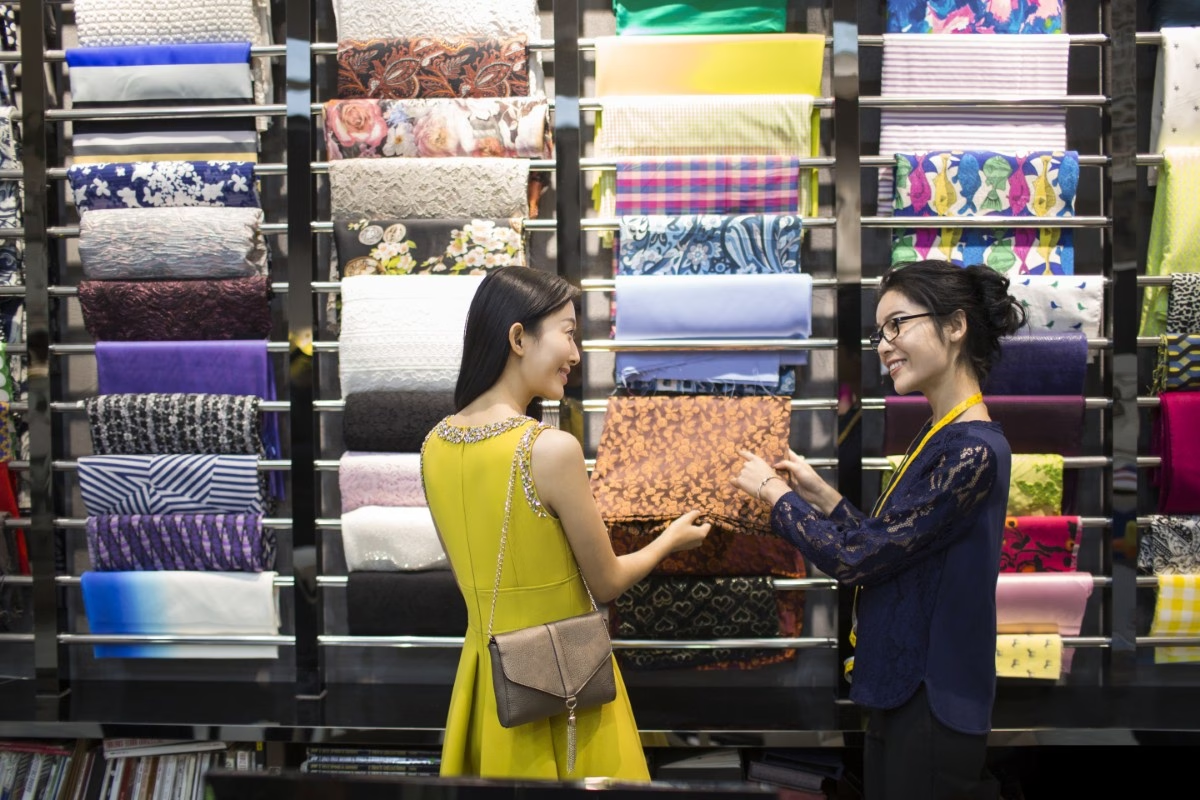
Finally, plan some extra room in your luggage if you think you’ll buy bulky items like comforters or multiple outfits. Silk is light and packs compactly (the factories love to remind you of that fact), but quilts and pillows, even vacuum-sealed, take space. Some places offer shipping services if you splurge a lot – they can mail your purchases home for a fee.
With these practical tips in mind, you’ll be well-prepared. A silk factory visit in Shanghai is relatively low-hassle and high-reward. Just remember to approach it with curiosity and have fun with the experience!
Silk-Making Process: A Photo Journal from Cocoon to Cloth
(In this section, imagine a visual journey through photos – from tiny silkworms to beautiful silk fabrics. We’ll describe each step of the silk-making process in story form, as if you’re flipping through a photo album of your silk factory tour. This will help you appreciate what you see during your visit and later allow you to match the text with actual pictures.)
Step 1: The Silkworms and Mulberry Leaves – Our journey begins in a silkworm nursery. Picture a shallow basket heaped with fresh green mulberry leaves and dozens of little creamy-white caterpillars munching away. These are Bombyx mori, the domestic silkworms – the undisputed heroes of silk production. In the photo, you’d see a child’s hand gently holding one of the wriggling worms to show scale (they’re about 5–7 cm long at full size). Silkworms spend about 4-6 weeks eating constantly, growing fatter, and preparing for their magical transformation. They only eat mulberry leaves, which are rich in the nutrients needed to spin strong silk. By the end of this feeding frenzy, each silkworm will be ready to spin a cocoon. (Imagine a close-up shot of a silkworm with its tiny head raised, chewing a leaf – it’s surprisingly cute!)
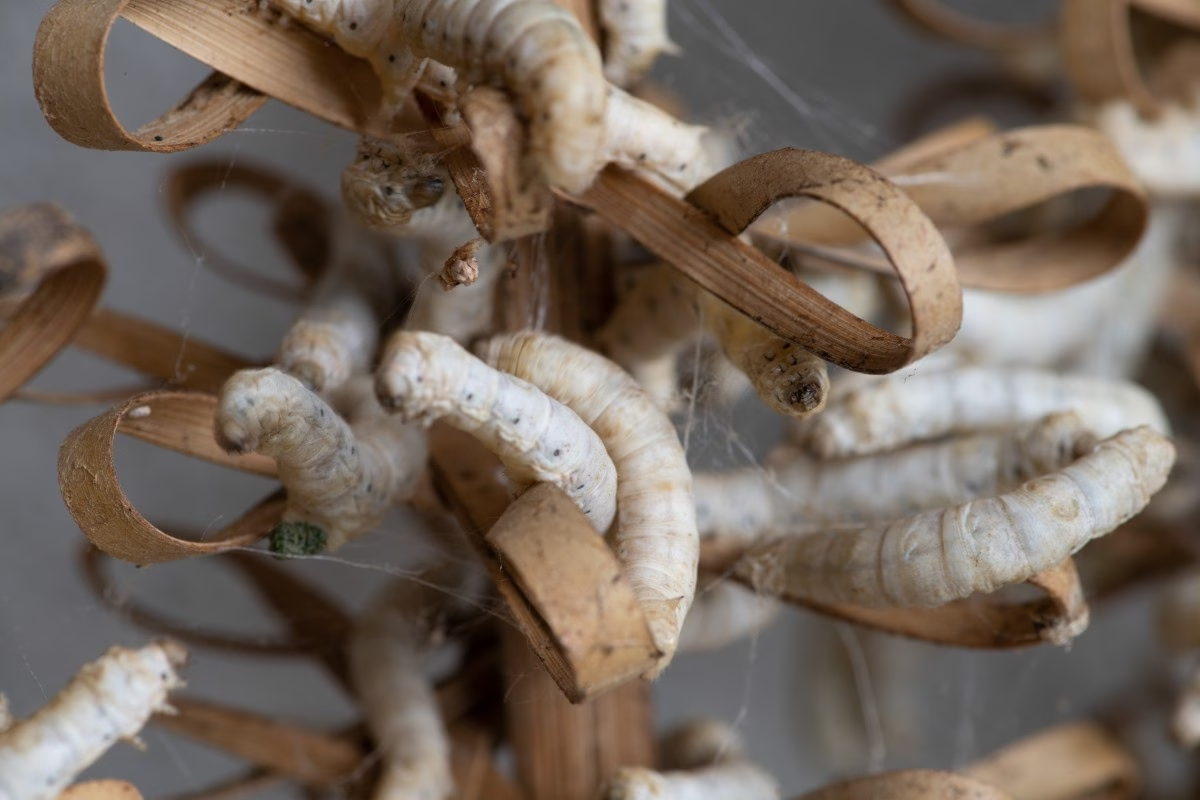
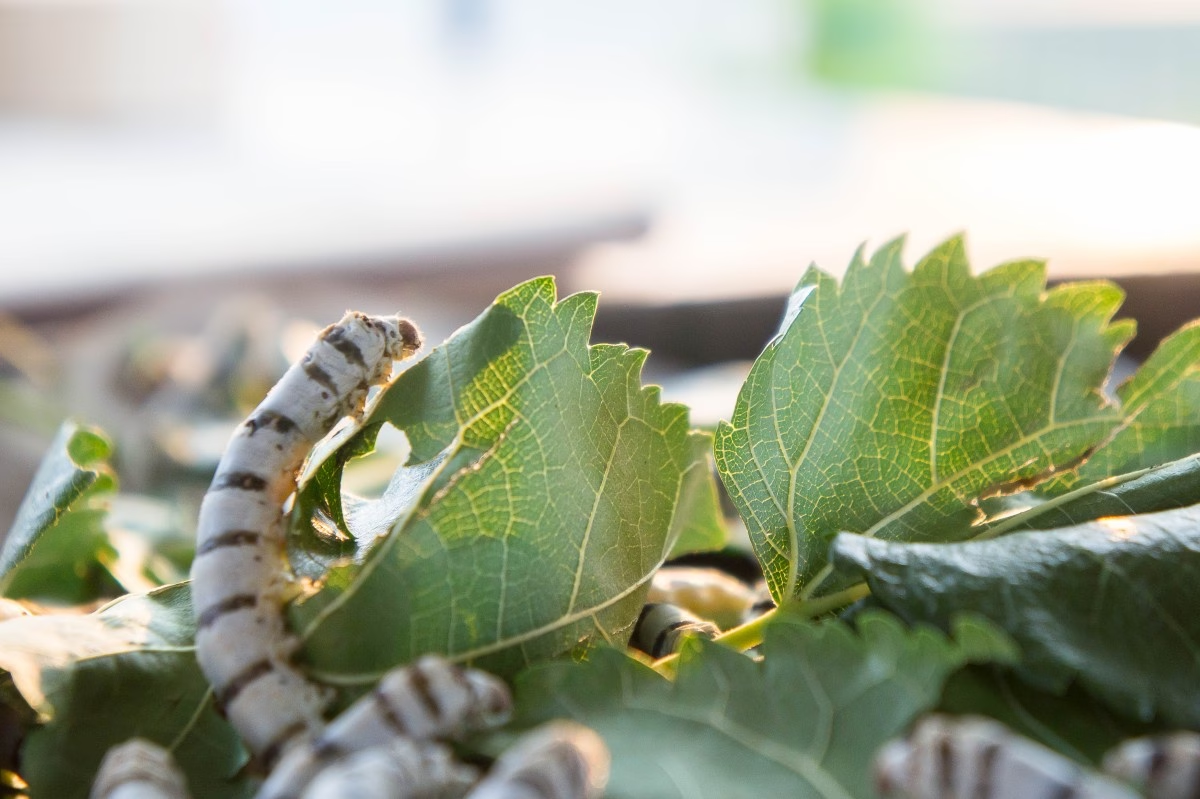
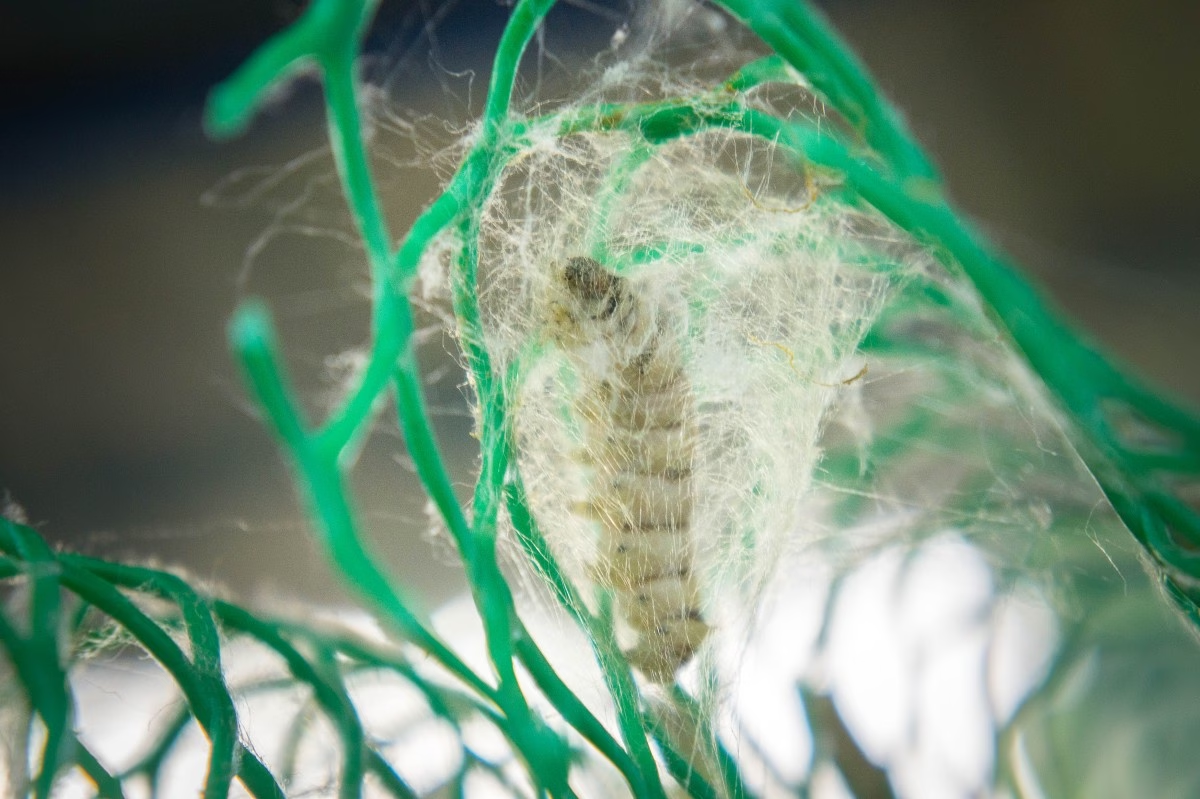
Step 2: Spinning the Cocoon – Next, we see a silkworm starting to enclose itself in a cocoon. The photo might show a silkworm inside a fluffy white cocoon, halfway done, so you see both the insect and the silk structure it’s building. The silkworm produces silk by secreting liquid fiber from its silk glands; once exposed to air, the fiber hardens into a filament. It moves its head in a figure-eight pattern up to 300,000 times to create a cocoon that’s like a dense oval ball of cotton. In this picture, trays of cocoons are stacked in the background at the factory, some yellow and some white. Different strains or diets can yield different colors, but the Shanghai factory predominantly has white mulberry silk cocoons. Each cocoon is one continuous thread that can be over 1 kilometer long! It takes the worm about 2-3 days to spin it completely. (A side image might show a basket full of completed cocoons, ready for the next stage.)
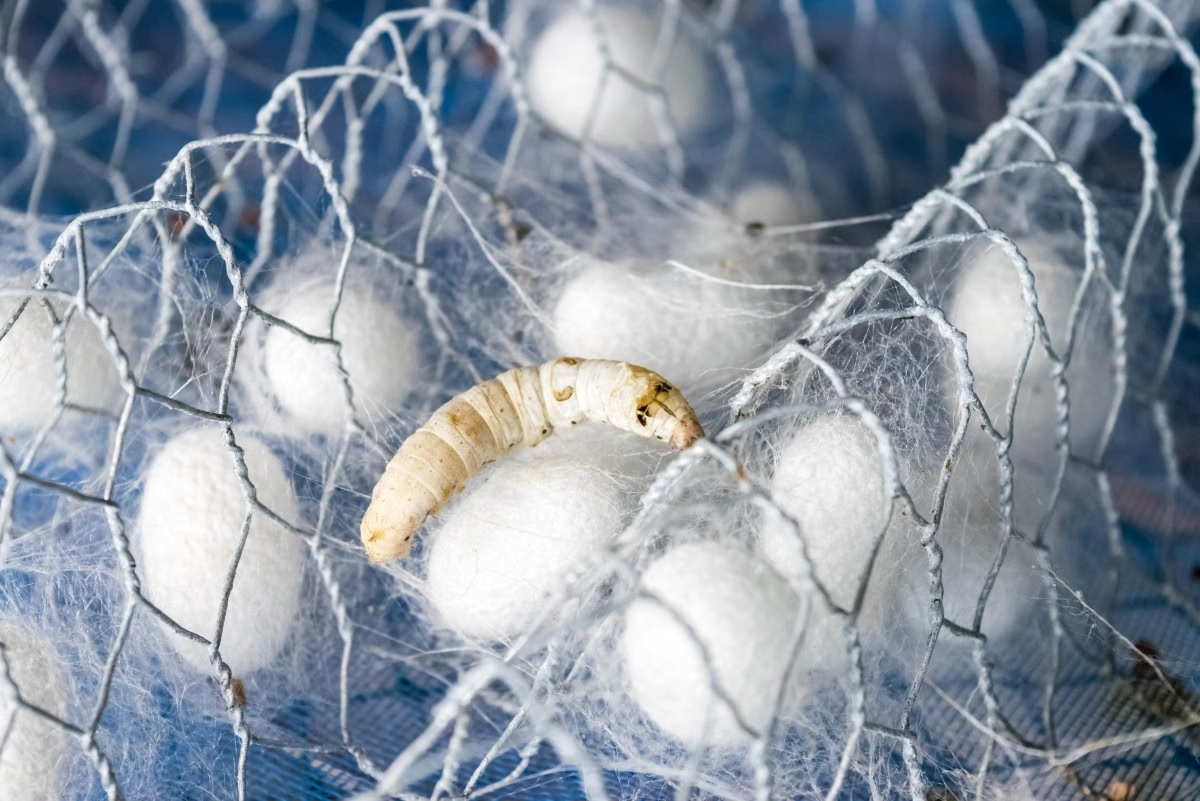
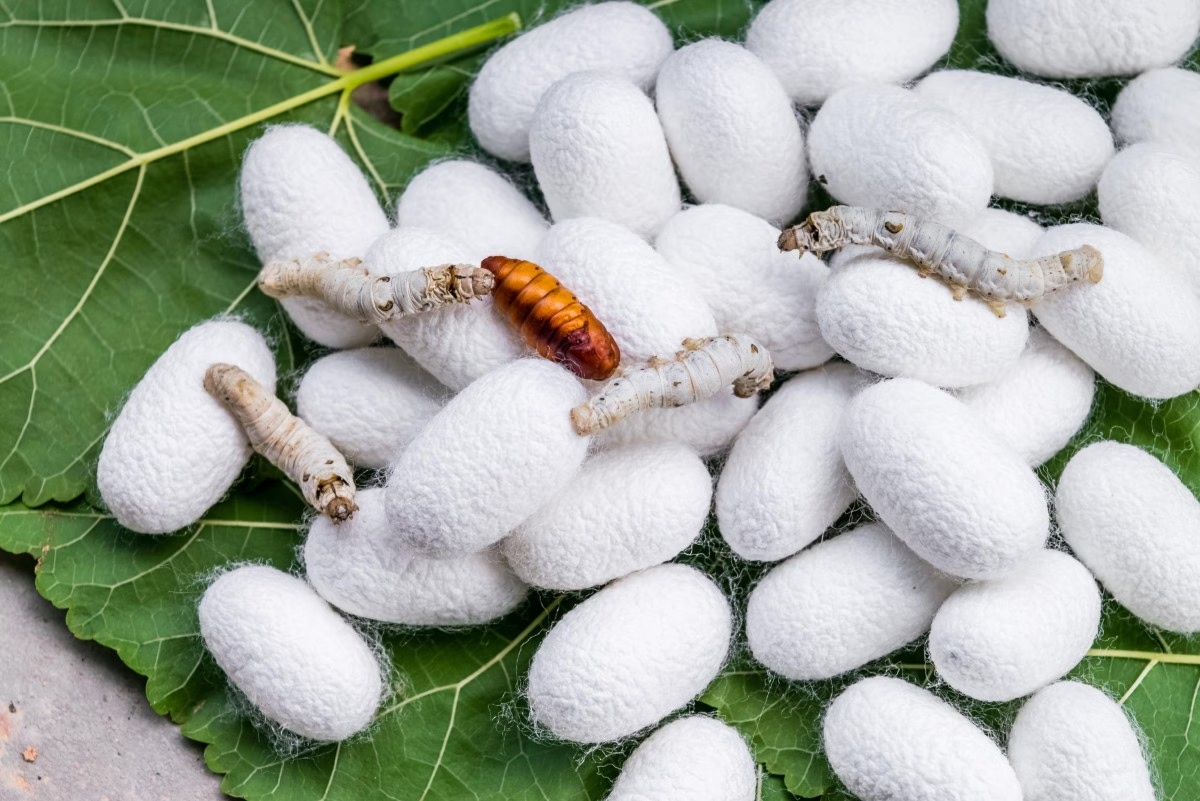
Step 3: Reeling the Raw Silk – This is the heart of the process, and a typical photo would capture a factory worker or guide demonstrating the cocoon boiling and reeling machine. In the image, you see a metal basin of hot water (or sometimes a steaming device) where cocoons are being soaked. The hot water helps to soften the sericin (the natural gum) and loosen the silk fibers. In the picture, a few loose filaments from each cocoon are caught on a small brush or rack – they look like fine wisps. The worker then threads those filaments onto a turning reel. This reel unwinds the cocoon, combining several filaments (perhaps 8-10) into one stronger raw silk thread. A close-up shot might show multiple cocoons bobbing in water with thin strands lifting from them, converging into a single thread that winds up on a spindle. The water often has a few empty husks of cocoons floating – those are ones that have been fully unwound. It’s mesmerizing to watch; in a still photo, you might see the blur of the reel turning and the almost invisible strand going up. This step is where raw silk is harvested. (Another image could show a spool with lustrous raw silk threads collected, ready for drying and further processing.)
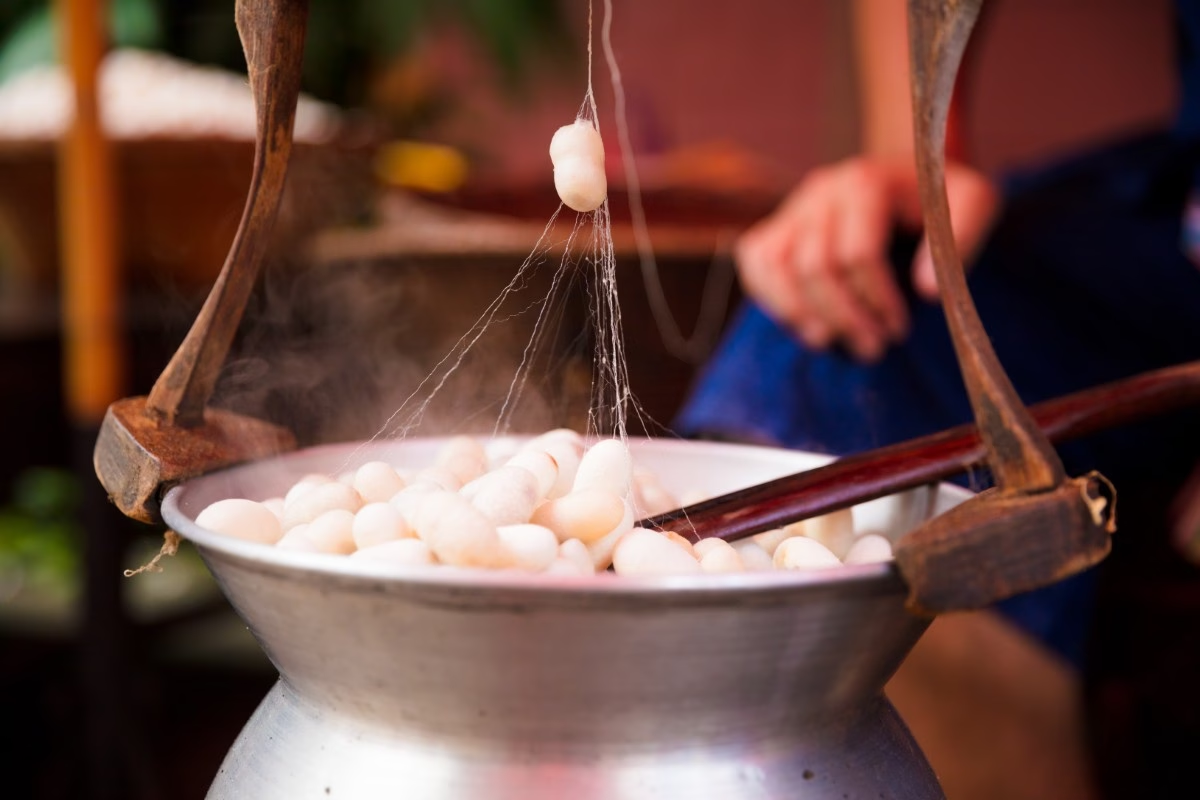
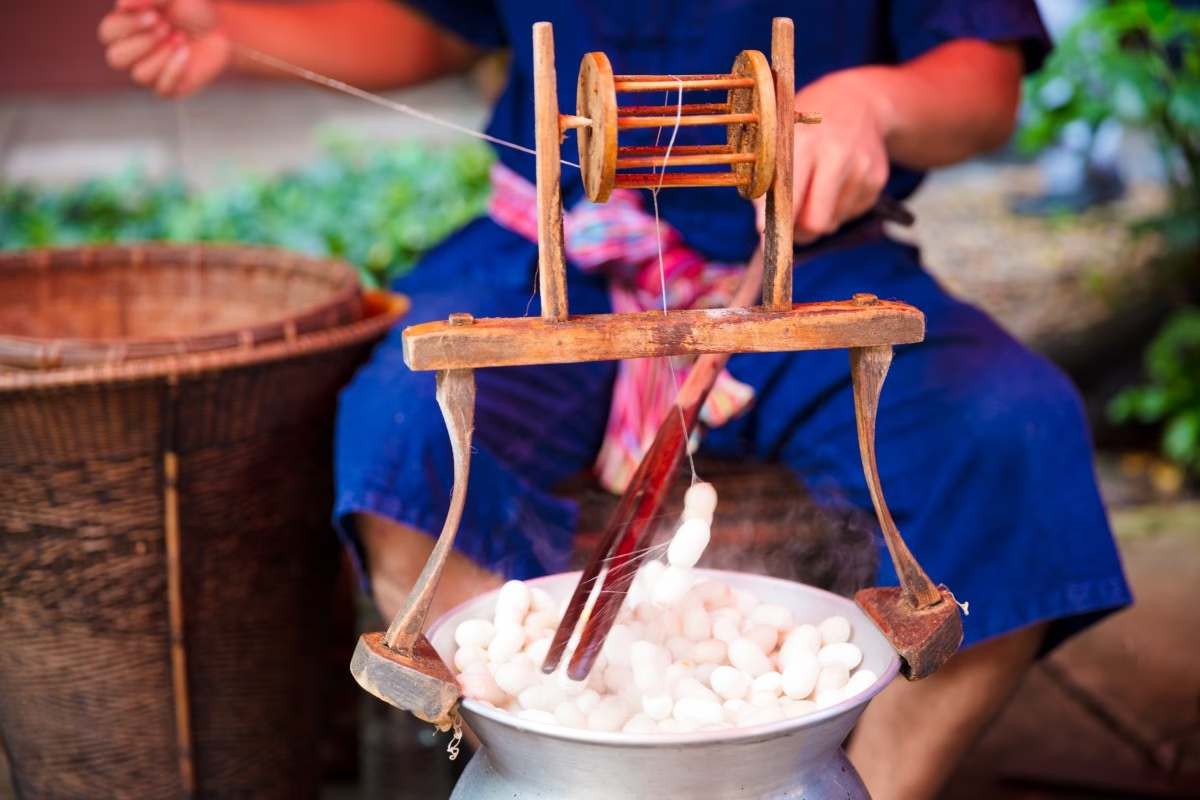
Step 4: Doubling, Twisting, and Weaving – After reeling, the silk threads are still quite fine and somewhat irregular. To make durable fabric, multiple threads are twisted together (thrown) to create silk yarn of the desired thickness. A photo here might depict a traditional spinning wheel or modern machine where several silk strands are being twisted into one, maybe a worker guiding the threads. Once the silk yarn is ready, it’s time for weaving. Imagine a shot of a loom: if it’s an old-style handloom, you’ll see wooden frames and pedals, and silk threads stretched out as warp and weft. If it’s a modern power loom, you see rows of threads and maybe the blurred motion of the shuttle. The silk yarns, now strong and uniform, are woven into fabric. In a visual story, we could have a photo of a weaver (perhaps an older master craftsperson at a demo in the museum) carefully weaving a delicate pattern – maybe a jacquard design for a silk brocade. The newly woven silk cloth can be seen rolling off the loom, already displaying a slight sheen. (A close-up of the fabric emerging from the loom would highlight the texture, smooth and shimmering with the characteristic luster of silk.)
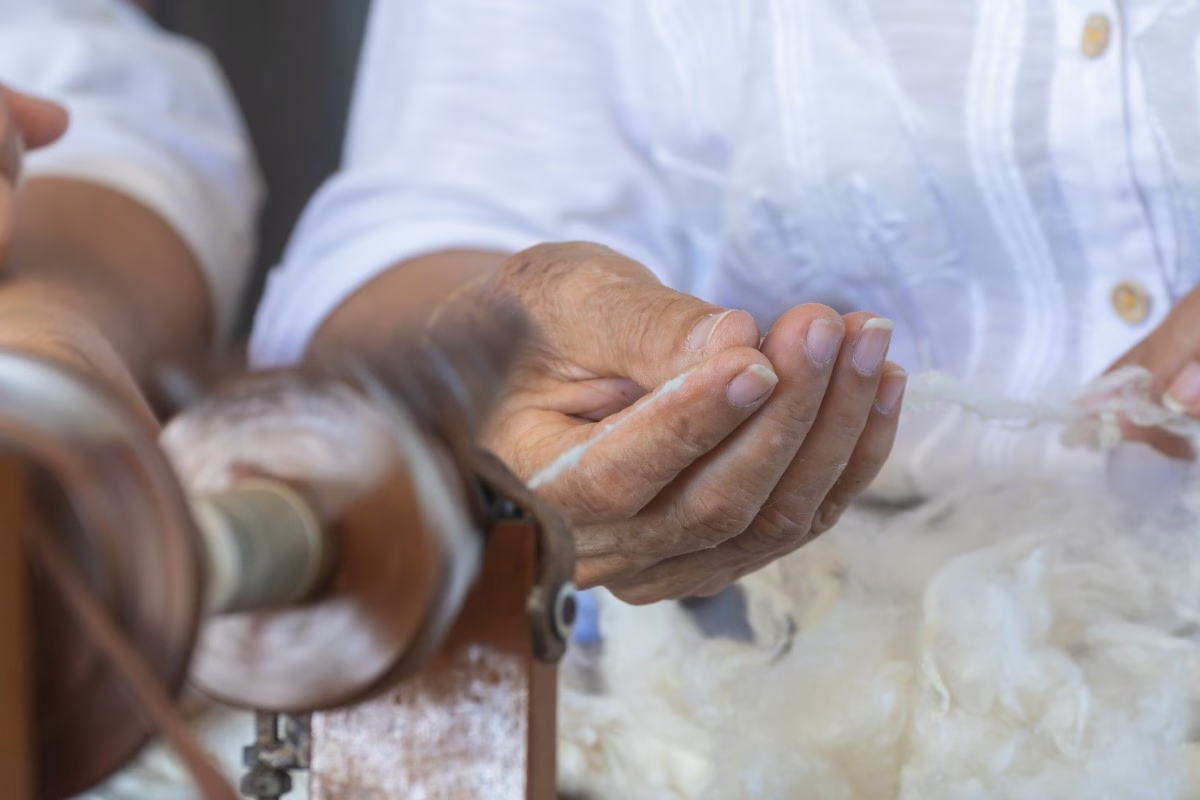
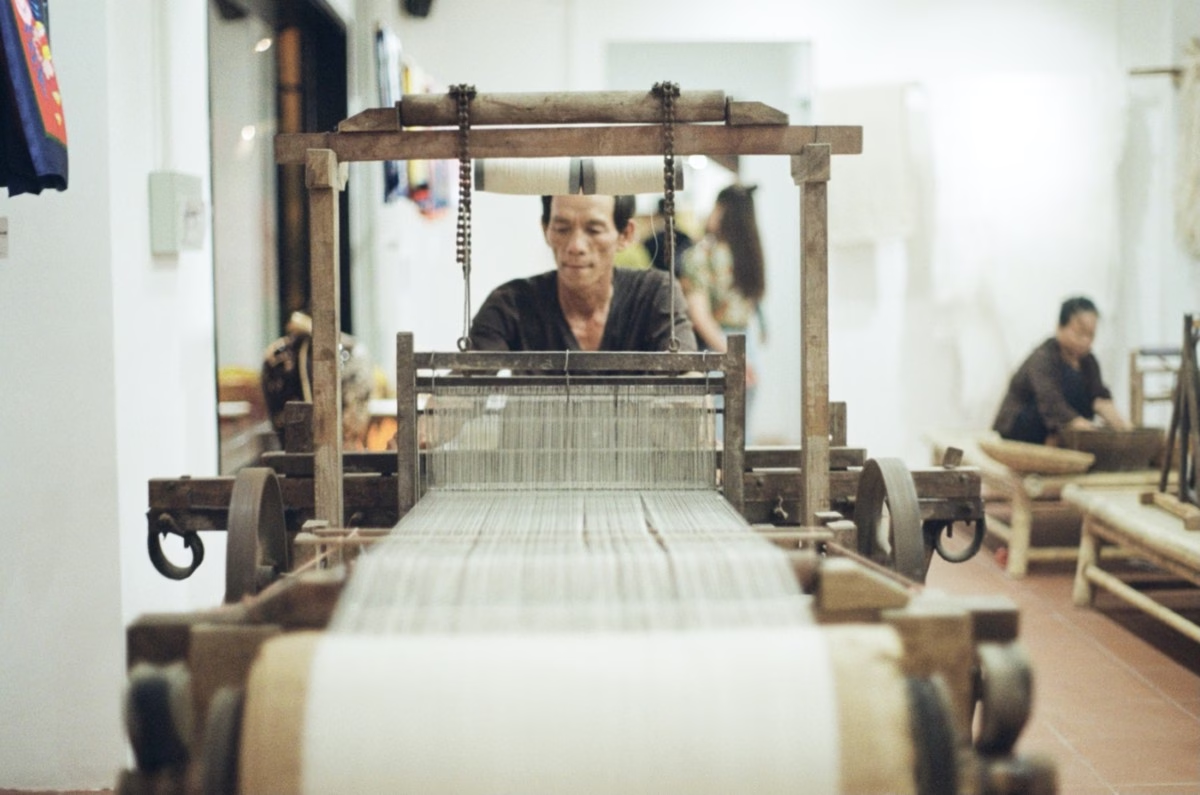
Step 5: Dyeing and Finishing – Raw silk fabric (called “greige” silk) is yellowish or off-white. The next pictures show how it becomes the vibrant textiles we know. One photo might show skeins of silk yarn being dyed in vats of colored dye – bright reds, blues, golds – hanging to dry. Another could show workers stretching and pinning lengths of silk fabric on racks to print patterns or set colors. The dyeing process in factories today is often done in bulk with machines, but an illustrative photo might depict a more artisanal method for effect. After dyeing, the silk is washed and sometimes treated (e.g., sandwashed silk for a matte finish). A final image might be a display of finished silk bolts in rainbow colors, stacked or hung in the showroom. You can almost feel the soft, cool touch through the image. If it’s a photo journal, the last photo could be of a finished product, say a mannequin wearing a gorgeous Shanghai-style qipao dress made of patterned silk, or a pile of silk pillows in brilliant hues, symbolizing the culmination of the silk’s journey from worm to wardrobe.
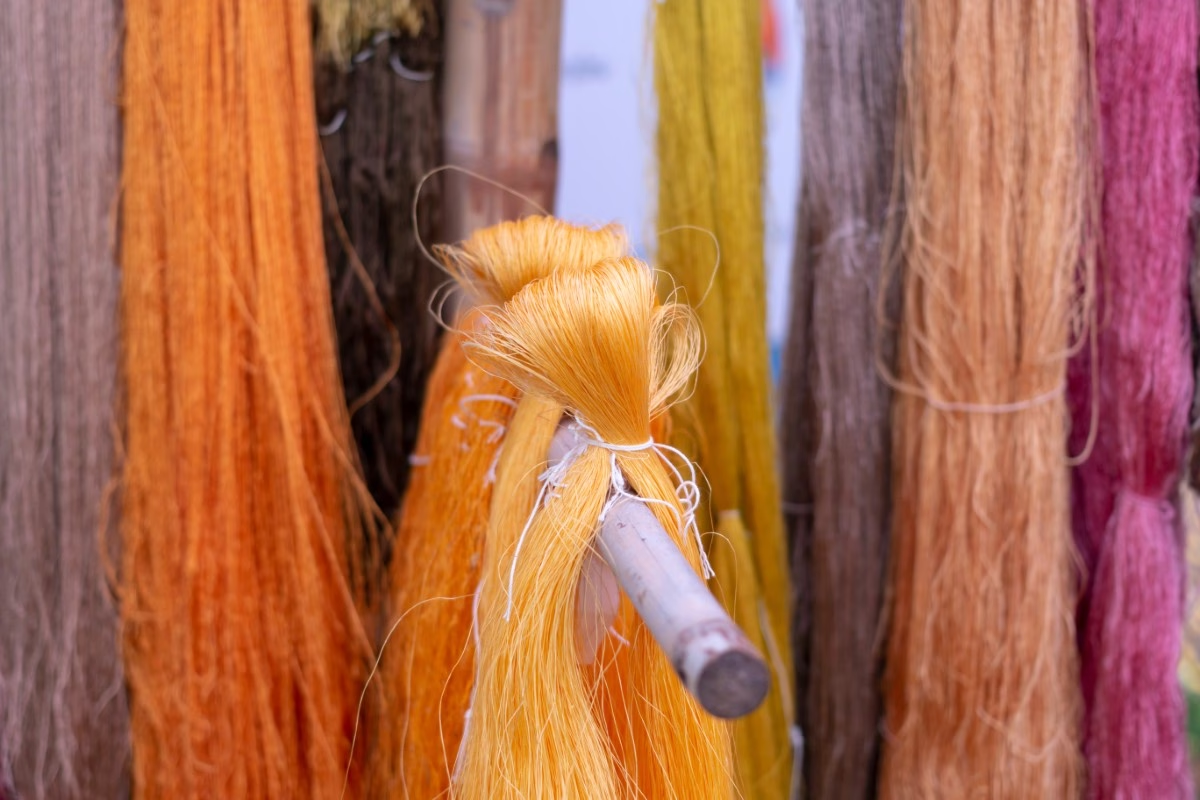
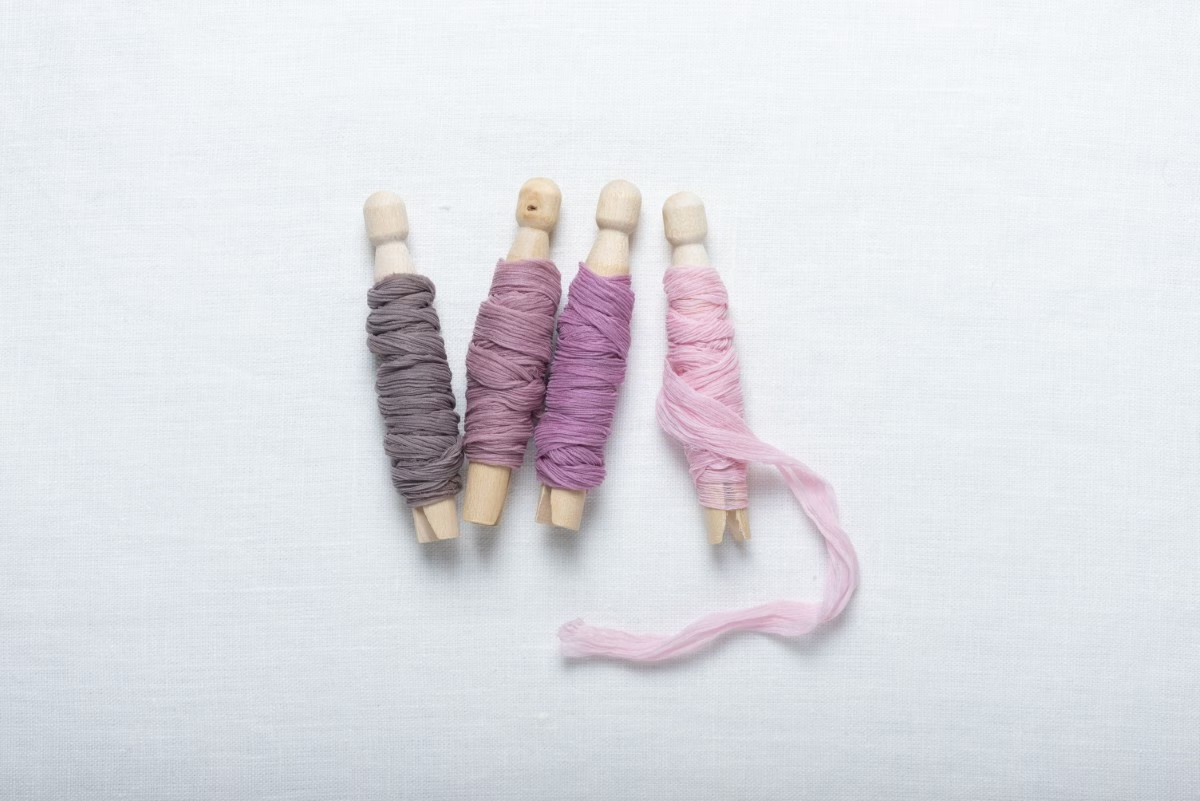
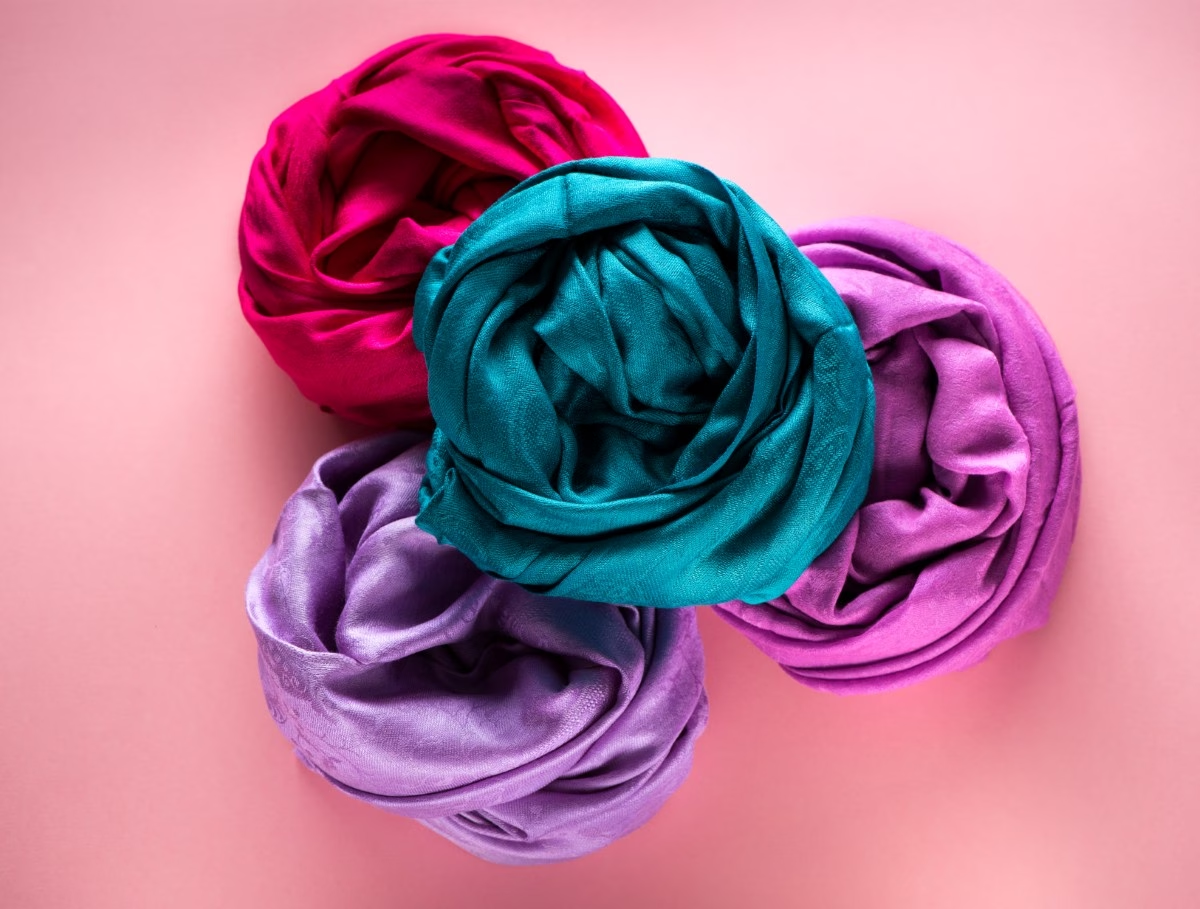
Through these steps, you’ve virtually witnessed the transformation: tiny caterpillars -> cocoons -> raw threads -> woven cloth -> sumptuous silk goods. During your actual tour, you’ll see many of these steps live. Remember, the real experience is even more impressive – you can smell the faint tea-like aroma of boiled cocoons, hear the whir of reeling machines, and feel the softness at every stage. This “photo journal” is a reminder of the intricate process and the labor of love behind every piece of silk you encounter in Shanghai.
Real Visitor Reviews & Tips
To give you an even clearer picture, we’ve summarized real visitor feedback from sources like TripAdvisor and Google reviews. Like any attraction, silk factories have their pros and cons as reported by travelers. Here’s what people are saying, so you can benefit from their experiences:
Pros (What Travelers Loved)
- “Fascinating Process” – Educational Value: Nearly everyone agrees that seeing how silk is made is eye-opening. Visitors loved learning about silkworms and were amazed at the delicate process of unwinding cocoons. Many had never seen a silkworm or touched a cocoon before and described the experience as “wonderfully informative and unique.” Even those who weren’t initially interested in textiles found themselves drawn in by the live demo and the engaging explanations. It’s not every day you see thousands of silk threads being spun into fabric in front of you!
- Hands-On Interaction: A big highlight mentioned in reviews is the chance to get hands-on, for example, helping to stretch out a layer of silk. “They let us pull a silk floss – it was so strong yet fine,” one visitor wrote. People also enjoyed being able to handle the silkworms (some bravely let the little caterpillars crawl on their hands!) and examining cocoons up close. This interactive element made the tour memorable and fun.
- Friendly Guides and Staff: Numerous reviews praise the factory guides for being knowledgeable, clear in their English explanations, and enthusiastic. Visitors felt comfortable asking questions. At Tian Hou Silk Factory, for instance, the guide’s demonstration was described as “lively and humorous,” making the history of silk enjoyable. Staff in the shops were also often noted as helpful, not overly pushy, and adept at finding the right sizes or products for customers. One reviewer noted the staff patiently showed them the difference in quality between cheaper silk and premium silk, which helped them make an informed purchase.
- High-Quality Products: Many travelers who bought items were very happy with the quality. Silk duvets get special mention – people report sleeping better under their new silk comforters and feeling it was worth the price. Authenticity is a big plus: these factory stores are seen as safer places to buy real silk rather than risk fake “silk” at street markets. “The silk scarf I got is genuine – you can feel the difference,” a shopper commented after comparing it to a cheaper one elsewhere. The variety of merchandise also impressed visitors, from clothing to silk-filled toys. It’s convenient to have such a range in one place.
- Convenience & Facilities: Reviewers appreciated little conveniences like luggage storage (some had their tour bus, but if you go independently, most shops will hold any bags for you while you tour), availability of restrooms, and places to sit if needed. The factories being air-conditioned was a relief on hot days. Also, the fact that most tours are free is itself seen as a pro – “It was a free demonstration with no pressure to buy, very nice,” said one traveler, noting that even though it ends in a store, you aren’t charged for the educational part.
- Unique Souvenir: Visitors often remarked that this was one of their favorite stops in Shanghai because they left with a very special souvenir. Instead of another trinket, they had a custom-tailored silk dress or a set of silk pillowcases that they saw being made. That connection between the experience and the souvenir added value. As one person put it, “Every time I use my silk duvet, I remember the Shanghai factory where I saw how it was made – it’s like sleeping under a story.”
Cons (Things to Watch For)
- Sales Pressure (Varies): The most common “con” in reviews is the feeling of being led into a sales pitch. Some travelers felt that, after the interesting demo, too much time was dedicated to selling products. For example, a few reviews of the Jiangnan Silk Museum mentioned they spent “15 minutes on silk education and 90 minutes in the shop” with guides pushing expensive duvets. The pressure largely depends on the tour company and guide – some have a harder sell approach. If you prefer not to buy, it can feel awkward if a salesperson follows you around. Tip: Don’t be intimidated; a polite, firm “No, thank you, I’m just looking” usually suffices. Remember, you’re not obligated to purchase anything.
- Price Point: While the quality is high, prices at these factory stores are higher than what you might find in general markets or back home. Some visitors experienced sticker shock, especially for big items. For instance, silk comforter sets costing upwards of ¥4,000 (~\$600) were out of some travelers’ budgets. One person compared prices and found that Hangzhou’s silk market had similar duvets for much less (¥1,250 vs ¥1,900 in Shanghai), suggesting that the convenience and showmanship in Shanghai come at a premium. If you’re a bargain hunter, this might frustrate you. However, you can often negotiate a bit – being aware of approximate pricing elsewhere can be a bargaining chip.
- Authenticity Concerns: A minority of reviewers doubted the purity of some products. For example, someone wondered if the “silk blend” items were being sold as pure silk. Generally, the main items (like quilts, high-end clothes) are authentic, but cheaper souvenirs (e.g., some scarves or clothing) might be silk blends. If 100% silk is important to you, inspect labels and ask. Reputable places will be honest about composition. The good news is that major factories are trusted by authorities (they wouldn’t survive long selling fakes given the oversight), so total scams are unlikely. But consumer vigilance never hurts – know that pure silk has a distinct feel and sheen that polyester satin can’t replicate.
- Repetitive If You’ve Seen One: For travelers who have been to other silk factories in China (for example in Suzhou or Beijing), the Shanghai one might feel repetitive. A few noted that it was “almost identical to the silk factory tour we did earlier on our trip.” This isn’t a fault of the factory per se, but something to keep in mind – if your China itinerary includes multiple cities, you might not need to do a silk factory in every city. The process doesn’t change, after all. In such cases, some wished they had spent that time on a different activity. If Shanghai is your only stop in China or first exposure to a silk factory, then this con doesn’t apply – it will all be new to you.
- Time Constraint on Tours: If you go with a tour group, a common complaint is feeling rushed. You might not get to explore the store at leisure or might have liked a longer explanation. Conversely, if you’re not interested in shopping, you might feel you’re waiting around for others. Group dynamics can be a con – someone wrote that their group spent too long because a few people were buying lots of stuff, which delayed the schedule. This is a small annoyance, but if you’re on a tight timeline, keep an eye on the clock or inform your guide of your preferences.
- Crowds and Noise: At peak times, especially when multiple tour buses land at once, the factories can get crowded. This can mean you’re jostling to see the reeling machine or it’s hard to hear the guide over other groups. A reviewer mentioned “it was hard to hear the presentation with three tours in the same room.” While generally tours are staggered, it’s not always perfect. If you encounter this, try to stay close to your guide, or wait a few minutes for the larger crowd to move on – sometimes even stepping to the side and joining the next small group tour can make a difference (the staff won’t mind).
Despite these cons, the overall sentiment from visitors is positive. Most cons are mitigated by going in with the right expectations (knowing there’s a sales element, knowing prices are not bargain-basement). And almost everyone agrees that seeing the silk-making process was worth it, even those who didn’t love the sales part. As one traveler aptly summarized: “Yes, it’s a touristy stop, but I learned a lot and have no regrets. Just remember you’re in control of your wallet.”
Our Advice: Use the pros to get excited and the cons to be prepared. This way, you’ll enjoy the silk factory for what it offers and not be caught off guard by the commercial aspect. And who knows – you might end up echoing the common review refrain: “We had no intention of buying anything… but fell in love with a silk comforter and now it’s on our bed at home!”
Where to Buy Silk in Shanghai
After immersing yourself in the world of silk at the factories, you might be inspired to do some shopping. Shanghai is an excellent place to buy silk, whether you’re looking for high-end fabric, tailor-made fashion, or affordable souvenirs. The city offers everything from state-run emporiums to local markets. Here’s a guide on where to buy silk in Shanghai, complete with price ranges and savvy shopping tips to ensure you get the real deal.
Factory Outlets & Museum Shops
The silk factory showrooms we discussed (Tian Hou, Jiangnan, Qi Cai, etc.) are naturally one of the best places to purchase silk. The advantages are clear: you’re buying directly from the source, and you have confidence in authenticity. These outlets have a wide variety, so if you saw something during the tour, you can buy it right there. Prices in these showrooms range from a few dozen RMB for small items (like a silk handkerchief or a small scarf) to several thousand RMB for luxury bedding or large silk carpets. For example, at Tian Hou, silk scarves might start around ¥150-¥300 ($20-$45) depending on size and weave, men’s silk ties around ¥100-¥200 ($15-$30), women’s blouses or pajamas from ¥400 to ¥800+ ($60-$120), and king-size silk duvets often around ¥2,000-¥3,000 ($300-$450) depending on silk grade. These are ballpark figures – there’s variability, of course.
Shopping Tip: If you’re short on time, buying at the factory you visit is convenient. They often run promotions like “buy one, get one 50% off” on certain items. As mentioned earlier, moderate bargaining is acceptable. You might politely ask, “Is there a discount if I pay cash?” or “Can you include a pillowcase for free if I buy this duvet?” The worst they can say is no, and often they’ll sweeten the deal to make the sale, especially in 2025’s competitive market.
One cool service at some factory stores: tailoring and customization. For instance, you can pick a silk fabric and have a qipao dress custom-made. They’ll take your measurements and either have it ready in a few days (if you’re still in town) or even ship it to you. Prices for custom pieces vary by fabric and complexity, but a tailored silk qipao might run about ¥1,000-¥1,500 (\$150-\$220) at a reputable place – more if you choose a very premium brocade.
Shanghai Silk Mansion & Silk Commercial Buildings
Shanghai has a famous enterprise known as the Shanghai Silk Mansion Company Ltd. (上海真丝商厦), often dubbed “The King of Silk.” This is essentially a major retail and wholesale center for silk fabrics in Shanghai. It operates a flagship store and multiple branches in the city. One known location is on East Nanjing Road (in the 500-block, near the pedestrian shopping street), and another is on Middle Huaihai Road (around number 1200), sometimes referred to as the Shanghai Silk Building.
These stores are like department stores dedicated to silk. You’ll find floor after floor of silk bolts (if you’re into sewing or want to buy fabric to take home, this is heaven), as well as finished products. The Shanghai Silk Mansion carries everything from silk satin, crepe de chine, raw silk, to silk blends. Prices here can be better than at tourist factories because they cater to locals and wholesalers, too. You could snag pure silk fabric for maybe ¥70-150 per meter ( ~\$10-20) depending on type. They also sell ready-made items similar to the factory stores.
What sets these shops apart is their prestige and history. Shanghai Silk Mansion has been around for decades and has even provided gifts for state guests. It’s like an institution of silk in Shanghai. As a result, you can trust the quality implicitly. If you mention to a local that you want real silk, they might direct you here.
Shopping Tip: At such places, bargaining is usually not done for small purchases; prices are often fixed. However, if you’re buying a lot of fabric or multiple pieces, you can always ask if there’s a bulk discount. Staff might throw in something small or give a slight price break for a big sale. Keep an eye out for seasonal sales – sometimes in the summer or end-of-year, they have promotions.
Markets and Tailor Shops
For those seeking a bargain or a custom-tailored garment, Shanghai’s markets are the place to go:
- South Bund Fabric Market (南外滩面料市场): This is a famous three-story fabric market where dozens of vendors sell materials and offer tailoring services. It’s not exclusively silk, but you’ll find many silk and silk-blend fabrics here. You can have a qipao (cheongsam), suit, dress, or shirt made to order, choosing from a huge range of fabrics. The key is to choose your vendor carefully – quality can vary. Pure silk fabric here might be cheaper than at Silk Mansion (perhaps ¥50-100/meter), but buyer beware: some vendors might pass off polyester as “silk” to uninformed tourists. If you know a bit about how silk feels (cool, smooth, not overly glossy or stretchy), use that knowledge. Tailor prices are negotiable – for example, a tailor might quote ¥800 for a silk dress, and you could probably settle at ¥600 if you’re having multiple items made. The Fabric Market is the best spot for custom-tailoring on a budget, just allocate 3-4 days for the turnaround (or 24-48 hours for rush jobs with a fee). Tip: To test fabric if it’s real silk, try the burn test – of course, you can’t set fire in the market, but you can ask if they have a small sample to burn. Real silk will smell like burning hair and leave a crisp ash that crushes to powder. Most vendors won’t actually do this in front of you, but their reaction to the request can tell you a lot. Alternatively, rub the fabric: silk warms up fast when rubbed, and when you scrunch it, real silk doesn’t hold deep wrinkles as much as synthetics do.
- Yuyuan Bazaar Shops: In Old Shanghai’s Yuyuan Garden bazaar, you’ll see plenty of silk scarves, robes, and knick-knacks. These are tourist shops, and while you can find some decent deals, be cautious about quality. Many “silk” items here might be polyester satin imitations (they’re cheaper and easier to maintain, which some tourists don’t mind). If you’re looking for inexpensive souvenirs – like a pretty “silk” pouch or a robe – this is fine, just know you get what you pay for. Prices can be bargained down hard. For instance, a vendor might start at ¥300 for a scarf that is actually polyester; you could end up paying ¥100 or less. If it’s genuinely silk, they will usually stick higher and won’t mind you doing a burn thread test. The experience can be fun if you like bargaining, but if you want guaranteed pure silk, stick to the more established stores.
- High-End Boutiques: If you desire designer silk fashion, Shanghai has many upscale boutiques (especially in areas like the Former French Concession or malls like IFC, Plaza 66, etc.) carrying Chinese silk designer brands and modern silk interpretations. Brands like Jiangnan Buyi (JNBY), Silk Suzhou, or even international luxury brands have offerings. These aren’t exactly “where to buy silk” in the traditional sense, but if you want a chic silk dress or scarf with a contemporary design, you’ll find plenty in Shanghai’s malls. Prices will be high (think a few thousand RMB for a designer silk dress), but the style is unique.

Price Ranges & Value
Let’s summarize typical price ranges for silk goods in Shanghai (as of 2025):
- Silk Scarves: Low-end (blends or tourist markets) ¥50-150; Mid-range (factory store or Silk Mansion classic prints) ¥200-500; High-end designer ¥800+.
- Ties and Small Accessories: Often around ¥100-300 for good silk ties at retail. Small items like silk eye masks or coin purses might be ¥30-100.
- Women’s Clothing (blouse, shirt): ¥300-800 in most normal shops for pure silk. Cheaper if off-the-rack in markets (but quality questionable). High fashion brands can be ¥1000+.
- Men’s Shirts: A custom-tailored men’s silk dress shirt at the fabric market ~ ¥400-600. Off-the-rack, similar range, or a bit more for premium.
- Qipao (Cheongsam dress): At a fabric market, ¥600-1200 depending on silk and complexity. At a boutique or factory, premade ones might be ¥800-2000. Heavily embroidered or one with Suzhou embroidery artwork can go much higher.
- Silk Pajamas/Kimono Robes: Often around ¥400-800 for a set in factories. Tourist markets have polyester “silk” robes for ¥100-200 (not real silk).
- Silk Duvet (Comforter): For a full-size (queen/king) with high-quality silk filling, expect around ¥1500-3000. Thinner summer quilts or smaller sizes may be ¥800-1500. Factory stores may offer package deals like “buy a silk duvet, get a silk pillow free,” etc.
- Silk Carpet (small): A small silk rug (like 2’x3’) might be in the ¥2000-5000 range. Larger ones can go into tens of thousands. These are for serious buyers/collectors.
When buying, consider what matters to you most: price, quality, or authenticity. If quality and authenticity are paramount, lean towards the established stores (even if the price is higher). If price is the main concern and you’re okay with possibly getting blends, the open markets are there, but be ready to haggle and inspect.
Shopping Tips for Trustworthy Silk
- Know Basic Tests: Real silk, when lit, smells like burnt hair. It also has a soft luster (not a hard shine like satin) and a rich, smooth but not slippery feel. The wedding ring test – pure silk fabric can be pulled through a ring easily due to its smoothness, though many fine polyesters can too. If possible, do the hand feel and wrinkle test: grab a bit of the fabric and crush it in your hand, then release – silk wrinkles a bit but the wrinkles dissipate quickly; synthetics either don’t wrinkle at all (due to polyester springiness) or if they do, the wrinkle stays longer.
- Reputation Matters: Buy from places with good reputation or reviews. The Shanghai Silk Building and Silk Mansion, and the official factory stores are generally safe bets. They have been serving customers for years and often have bilingual staff. If a deal seems too good to be true (e.g., “100% silk” king bedding set for ¥300 in a street stall), it likely is.
- Bargain at the Right Places: Don’t try to bargain in a large department store or official outlet; do bargain in bazaars and markets. In tourist markets, offer 20-30% of the first asking price and negotiate up from there. In fabric markets, you might aim for around 50-60% of the initial quote for tailoring after some haggling.
- **Ask for **Shuihuo (Tax Refund): If you shop in bigger stores and spend above a certain amount (usually ¥500+ in one store and if you’re leaving China within 90 days), you might be eligible for a VAT refund at the airport (around 11%). Ask the store if they can provide the paperwork for a tax refund (“shuìhuí” in Chinese). Many big stores catering to foreigners do.
- Credit Cards and Cash: Most large silk stores accept credit cards (Visa/Mastercard). Smaller market stalls are cash (or WeChat Pay/Alipay) only. It’s always good to carry some cash for bargaining purchases, as cash might get you a better price than card.
- Beware of “Shopping Traps”: There are some tour scams where guides get commission for taking you to overpriced stores. The places we’ve listed are well-known and generally fair, but if a random driver insists on taking you to a “government silk store” that you’ve never heard of, be cautious. Stick to the names that have credibility (like those we’ve covered). On that note, Jiangnan Silk Museum and Tian Hou are commonly referred to as “government silk factories” (though they may be state-supervised, they are commercial entities) – they are legitimate, albeit geared to tourists.
- Buy What You Love: Silk is a luxury material. If you fall in love with a silk jacket that’s a bit pricey, remember the craftsmanship and treat yourself if you can – it’s a special souvenir that can last decades. Conversely, if you only mildly like something, don’t be swayed by a salesman saying “very good price, very good quality, last chance.” There are always more silk shops! Shop around, and purchase when you’re sure.
Shanghai, being adjacent to Suzhou, benefits from a supply of fine silk at good prices. With these tips, you can navigate the myriad options confidently. Whether you end up at a polished emporium or a local tailor stall, you’ll know to get good silk value.
And, if you leave Shanghai still dreaming of that scarf you didn’t buy, fear not: many silk shops have online stores or can ship internationally if you contact them later. But it’s always best to make your choices while here, in the silk capital gateway, where you can see and feel the fabric directly.
Happy silk shopping! Your purchases will forever carry the memory of Shanghai’s silk legacy – from the bustling streets where you bought them to the tranquil mulberry groves where it all began.
Beyond Shanghai: Silk Experiences in Suzhou & Hangzhou
If your China travels extend outside Shanghai, you’re in luck – nearby cities offer additional, and sometimes even richer, silk experiences. Shanghai’s silk industry doesn’t stand alone; it’s part of the greater Jiangnan silk region. Two places in particular are worth mentioning: Suzhou and Hangzhou. They are each about an hour or two away and are famous for their own silk culture. Here’s a brief introduction to what you can find in these silk hubs:
Suzhou: China’s Silk Capital Next Door
Suzhou, often dubbed the “Silk Capital of China,” is a city with a silk heritage as old as the Silk Road itself. If Shanghai whetted your appetite, Suzhou will satisfy it. The city boasts both historical museums and active factories:
- Suzhou No.1 Silk Mill (苏州第一丝厂): This is a century-old silk factory and probably the most famous stop for visitors. Much like the Shanghai factories, Suzhou No.1 Silk Mill offers a guided tour through the silk production process – you’ll see live silkworms, cocoon sorting, reeling, weaving, etc. Many travelers report the Suzhou factory as a larger or more detailed operation, given Suzhou’s specialization. The opening hours are roughly 8:30 AM to 5:00 PM, daily, and it’s often free of charge to enter. The tour ends in a massive showroom where you can buy all manner of silk products, often at slightly better prices than in Shanghai. Suzhou silk quilts, for instance, are renowned and sometimes a bit cheaper because you’re right at the source (some folks deliberately wait to buy their duvet in Suzhou for this reason). Expect a similar experience of demonstration and shopping, with a bit more emphasis on Suzhou’s specific silk history.
- Suzhou Silk Museum (苏州丝绸博物馆): This is an actual museum (not a factory store) dedicated to the history of silk. It’s located in downtown Suzhou and has exhibits of ancient silk textiles, traditional looms, and garments from various dynasties. Entry is typically free, and it’s open 9:00 AM to 5:00 PM (closed Mondays). It’s a great place to see priceless silk relics – for example, fragments of silk from thousands of years ago, imperial robes, and the evolution of silk weaving technology. They do have a small gift shop with quality souvenirs, but no pressure to buy since it’s a government museum. If you are a history buff or textile enthusiast, the Silk Museum is a must-visit for context and depth.
In Suzhou, you can literally feel silk in the air – there’s a saying that “to visit Suzhou is to step into a silk tapestry.” The city’s classical gardens, canals, and silk workshops complement each other. Consider combining a trip to the Humble Administrator’s Garden or Tiger Hill with a silk factory visit for a full Suzhou experience.
(Practical note: Suzhou is about 30 minutes by high-speed train from Shanghai. Many do it as a day trip. Some Shanghai tour companies even offer day tours to Suzhou, including a silk factory stop.)
Hangzhou: Home of the National Silk Museum
Hangzhou, another jewel of the Yangtze Delta, is famous for its West Lake scenery – and also for silk, especially silk retail and culture. It’s the historical end point of the Silk Road (the maritime route) and has been a silk production center for centuries.
- China National Silk Museum (中国丝绸博物馆): Situated in Hangzhou, near the beautiful West Lake, this is the largest silk museum in the world and a state-level institution. It’s a paradise for anyone interested in silk’s story across time and continents. The museum features extensive galleries: from the ancient Silk Road trade (you’ll see how silk was exchanged for goods like spices and gold) to ethnographic exhibits of silk in minority cultures, to modern silk fashion. They have live demonstrations too – sometimes you’ll catch artisans doing traditional dyeing or weaving on-site. Entry is free, and it’s open 9:00 AM to 5:00 PM (closed Mondays). Recently updated, the museum boasts interactive displays – you can even design a pattern virtually or try weaving on a simple loom. It’s wonderfully curated to emphasize both the art and science of silk. Plan a good 2-3 hours if you’re a fan of museums.
- Hangzhou Silk Market (杭丝府 or Silk City): Hangzhou also has a famous silk shopping district known as Silk City (on Tiyuchang Road). This is somewhat akin to an open market dedicated to silk fabrics and clothing. You can wander through dozens of stalls and shops all selling silk, from raw fabric to finished clothes. Prices can be quite competitive here, sometimes better than Shanghai, owing to Hangzhou’s direct sourcing. It’s a great place to buy silk by the bolt or pick up souvenirs like silk umbrellas, fans, and scarves with local designs. Bargaining is expected. The experience is a bit chaotic but authentic – you’ll likely rub shoulders with both foreign tourists and Chinese domestic shoppers hunting for the best silk deals.
- Hometown of Silk – Wuzhen and Others: If you venture a bit beyond Hangzhou, places like Wuzhen Water Town (in Tongxiang, between Hangzhou and Suzhou) have traditional silk workshops such as the Yida Silk Factory. In Wuzhen’s scenic Xizha area, there’s a restored working silk mill where you can see old-fashioned weaving and even buy handmade silk souvenirs. It’s a charming add-on if you’re exploring water towns.
Hangzhou’s silk is often associated with high-quality satins and inventiveness in silk fashion. In fact, Hangzhou hosts fashion festivals and silk expos. It also has the Silk Street near West Lake, historically where foreign merchants came to buy silk since the early 20th century.
Which One to Choose?
If you have time for side trips:
- Suzhou vs. Hangzhou for silk? Suzhou offers the manufacturing spectacle and possibly purchasing opportunities at good prices, while Hangzhou offers the grand museum and a broader cultural context (and a good shopping street too). Both cities are wonderful to visit beyond silk as well – Suzhou for its gardens and old-world charm, Hangzhou for its natural beauty and tea culture.
- Some travelers do both: for example, buy silk home textiles in Suzhou and then learn deep history in Hangzhou.
If you only stay in Shanghai, no worries – as we’ve shown, Shanghai has plenty to satisfy your silk curiosity. But it’s nice to know that the story doesn’t end at the city borders. The entire region is woven together by silk threads.
In essence, exploring Shanghai’s silk industry gives you a gateway, and places like Suzhou and Hangzhou allow you to dive even deeper. Silk has shaped this part of China profoundly – economically, culturally, and even poetically (many Chinese poems and songs praise the silk of Suzhou or the craftsmanship of Hangzhou).
Wherever you choose to go, you’ll carry a part of that silky heritage with you – be it knowledge, memories, or a suitcase full of gorgeous silk items!
Frequently Asked Questions (FAQs)
To wrap up, let’s address some common questions travelers have about visiting silk factories in Shanghai. This FAQ section should clear up any remaining curiosities or concerns:
Do I need to book a silk factory tour in advance, or can I just walk in?
In most cases, you can just walk in. The popular silk factories (Tian Hou, Jiangnan, etc.) welcome drop-in visitors and will slot you into the next available tour/demonstration. If you’re going with a private guide or tour group, they handle any needed arrangements. Only if you were arranging something special (like a large group or a specific timing outside normal hours) would booking ahead be necessary. For independent travelers, simply show up during open hours and you’ll be accommodated. That said, if you’re on a tight schedule, going early in the day can ensure you don’t have to wait long for an English tour.
Is there an admission fee for visiting a silk factory or museum in Shanghai?
presentations with the expectation that some visitors may purchase products. The Shanghai Textile Museum (if you visit that separately on Aomen Road) or other purely museum exhibits might have a nominal fee or are free; for example, Suzhou’s official Silk Museum is free. But places like Tian Hou Silk Factory and the Jiangnan Silk Museum do not charge an entry ticket. You can enjoy the tour without paying. Of course, if you decide to buy something, that’s where money comes into play.
Will the guides speak English? I don’t speak any Chinese.
Yes – the silk factories on the tourist circuit have English-speaking guides available. In our experience and from widespread reviews, the presentations are offered in multiple languages (sometimes you’ll see a Chinese group in one corner, an English group in another). If you walk in alone and staff initially greet you in Chinese, just indicate you’d like an English tour – they will either join you to an ongoing English group or assign an English-speaking staff member to you. Other languages: some guides speak a bit of French, Spanish, etc., but not guaranteed. English is the most catered to. Printed brochures in English are often available too. In summary, language will not be a barrier – these venues are very used to international visitors.
How can I tell if something is real silk or fake when buying?
Great question! There are a few methods:
Touch and Feel: Real silk feels smooth and luxurious but not overly slippery (it’s often described as having a cool, almost alive feel against your skin). It will warm to your body touch quickly. It also has a subtle sheen – lustrous but not glossy like cheap satin.
Burn Test: If you take a few thread fibers from the material and carefully burn them (obviously ask before doing this!), real silk burns with the smell of burnt hair and the ash will be black and crumble. Fake silk (polyester) smells like plastic and forms a hard bead. Of course, you likely won’t be lighting fires in stores, but reputable sellers might do a small demo for you with sample fibers.
Ring Test: A classic trick – 100% silk fabric can often be pulled through a ring because of how fine the threads are. If a scarf slides easily through a ring, that’s a sign of genuine silk (though very slick polyester might too).
Price and Source: Honestly, buying from the established stores or factories we discussed, you can trust that it’s real silk. They have reputations to maintain. If you’re buying from a random street vendor at a dirt-cheap price, be skeptical.
Ask for Certification: Some places provide a little certificate or tag indicating the silk grade (for example, “100% mulberry silk, Grade A”). While tags can be faked, if you’re at a large store, those certifications are usually legit.
In short, at the factories and major silk stores, you can shop with confidence. They stake their name on selling real silk. Just use common sense – if something labeled “silk” is extremely shiny, crunchy to the touch, or very low-priced, it may not be pure silk.
Can I bargain at the silk factory stores, or is it a fixed price?
This depends on the place. Factory/museum stores often have price tags and might initially appear fixed-price, but mild bargaining is often possible, especially for expensive items. It’s not like a flea market where you hack the price in half, but you might ask, “Is there any discount?” or mention seeing a lower price elsewhere. They might give ~10% off or add a small gift. Don’t expect huge drops, but on big purchases (like spending several thousand RMB), you have some leeway. At government-run museum gift shops (like an official museum), prices are typically fixed. At the South Bund Fabric Market or tourist markets, haggling is expected.
So as a rule of thumb, try politely negotiating at commercial outlets – the worst outcome is they say no. Many travelers have reported getting a better deal after some friendly bargaining at the Jiangnan Silk shop and similar places. If you’re uncomfortable bargaining, it’s okay – you won’t be ripped off; you’ll just pay the marked price, which reflects the quality.
I’m not part of a tour – if I visit on my own, will I feel pressured to buy?
Not significantly. The staff will certainly offer items to you and explain what’s for sale (that’s their job), but you can absolutely leave without buying anything. Plenty of independent travelers do the tour, say thank you, and depart empty-handed. You might feel a bit guilty because it’s a free tour and you didn’t purchase, but don’t sweat it. A simple smile and “No, thank you, maybe next time” works. They are used to a percentage of visitors not buying. On the flip side, if you do want to buy, without a tour guide rushing you, you can take your time. Independent visitors sometimes get less pressure because the staff know you came by choice and might just be looking. In any case, any pressure is usually mild; these places rely on reputation and volume, not hard selling to one person. If someone is pushy, just stay polite and firm. You won’t burn any bridges by not buying.
What’s the best way to get silk items home? Are there shipping options?
Silk is light and not bulky (except quilts, which compress a lot). Most items you can pack in your suitcase easily. The factory will often vacuum-pack duvets into flat packages – do take advantage of that, it reduces them to a fraction of the size. For any delicate silk outfits, consider carrying in your hand luggage to avoid wrinkles (or pack tissue paper with them). If you go on a shopping spree and have lots of fabric or bedding, shipping is an option. Many stores can arrange shipping via EMS or DHL. They will charge based on weight/volume – it might be, say, \$50-100 to ship a large box internationally, so it’s worth it only if you have a lot. They’ll fill out forms (you may need to handle customs duties if applicable in your home country). For most people, fitting silk purchases in luggage is manageable. Just keep them dry (silk doesn’t like moisture) and maybe in plastic bags in case of any spills in transit. Also, silk doesn’t wrinkle as badly as, say, cotton – a quick iron on low heat at home can refresh any creases.
Are there any *silk etiquette* or cultural points I should know when visiting?
Nothing very strict – just normal courtesy. If you’re handed a silkworm or cocoon, handle it gently. Photography is usually allowed (many people take pics of the silkworms and machines), but if you’re unsure, ask the guide – typically they’ll say yes except maybe in the high-end store section they might not want close-up shots of every price tag. When bargaining in markets, do so with a smile – it’s part of the game, but keep it lighthearted. If you’re invited to join a demo (like pulling silk), participate with clean hands (maybe avoid touching if you have sunscreen or lotions that could soil the silk). And if you have allergies to moths or dust, note that the reeling area has a distinct smell and some fuzz in the air – it’s rarely an issue, but sensitive folks might want a mask. Culturally, silk is seen as a symbol of refinement in China, so expressing admiration for the craft (“Wow, that’s beautiful silk!”) is always appreciated by the presenters who are proud of their heritage.
Hopefully, these FAQs resolve any lingering questions. If you think of anything else, ask your tour guide or even fellow travelers – sharing info is part of the journey!
Conclusion: Embrace Shanghai’s Silk Journey
Stepping into a silk factory in Shanghai is like opening a glossy storybook – one that flips through chapters of ancient emperors, tireless silkworms, master weavers, and modern entrepreneurs. From the moment you feel the soft cocoon in your hand to the evening when you slip your new silk scarf around your neck, you become a character in this silk story, too.
Shanghai makes this journey accessible and delightful for travelers. In a single afternoon, you can gain a newfound appreciation for a fabric you’ve known all your life and support a living tradition by taking a piece of it home. The city’s silk factories and museums, with their blend of show-and-tell, ensure that you don’t just see silk – you experience it. You smell the boiled cocoons, you hear the loom clacking, you feel the strength of silk threads, and you witness the transformation from humble caterpillar to sumptuous textile.
We encourage you to explore Shanghai’s silk industry firsthand. It’s an experience that engages all the senses and bridges the gap between past and present. Whether you’re negotiating the price of a stunning jade-green silk qipao in a local shop or simply chatting with a guide about her childhood memories of sericulture, you’re participating in a heritage that has woven its way through Chinese civilization for millennia.
As you conclude your Shanghai silk adventure, you might find that you’ve collected more than just beautiful souvenirs. You’ve collected stories: the legend of Leizu discovering silk, the knowledge of how that luxurious pillowcase came to be, perhaps even the proud anecdote of how you bargained in Mandarin for the first time. These are travel memories that last a lifetime, much like the quality silk you’ve acquired.
Finally, remember that silk, with all its elegance, is also incredibly resilient, much like Shanghai itself. Through dynasties and decades of change, the silk trade adapted and thrived, and today it welcomes you with open arms (and maybe a friendly silkworm or two). So, wrap yourself in that silky smooth comforter, or don that vibrant Shanghai silk blouse, and let it remind you of the rich tapestry of experiences you had in this city.
Safe travels, and may your journey continue to unfold as smoothly as the finest silk. In Shanghai and beyond, there’s always more to discover – but now you’ll do so with the soft touch of Shanghai silk accompanying you. Enjoy the warmth, the luster, and the story that comes with it. Happy exploring!
(Covering Shanghai’s silk factories truly gives you a deeper insight into Chinese culture and craftsmanship – we hope this guide has been the most comprehensive help for your 2025 adventure. If you found it useful, feel free to share it with fellow travelers headed to the “Pearl of the Orient.” May your Shanghai silk story be as rich and colorful as the fabric itself!)
